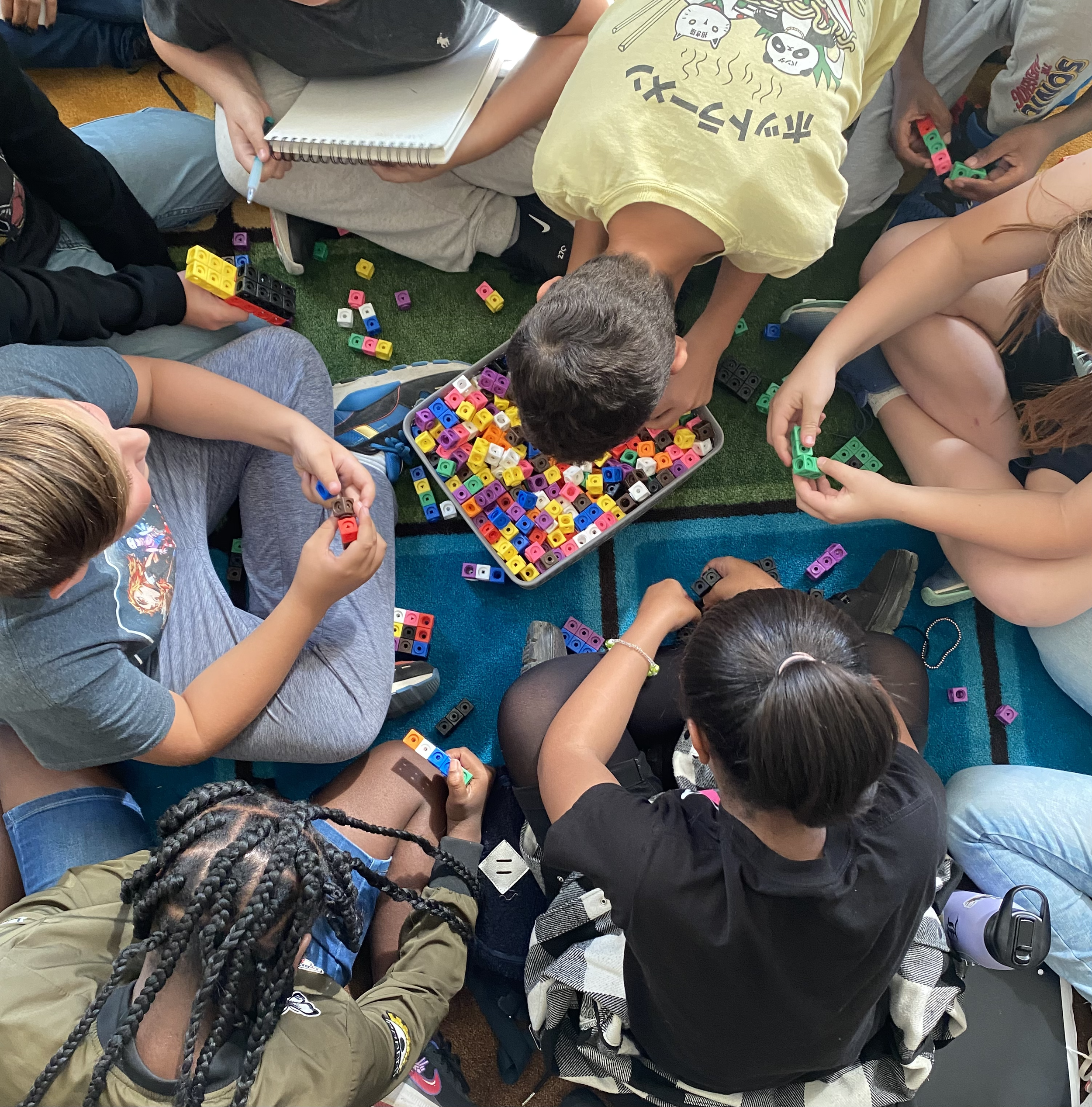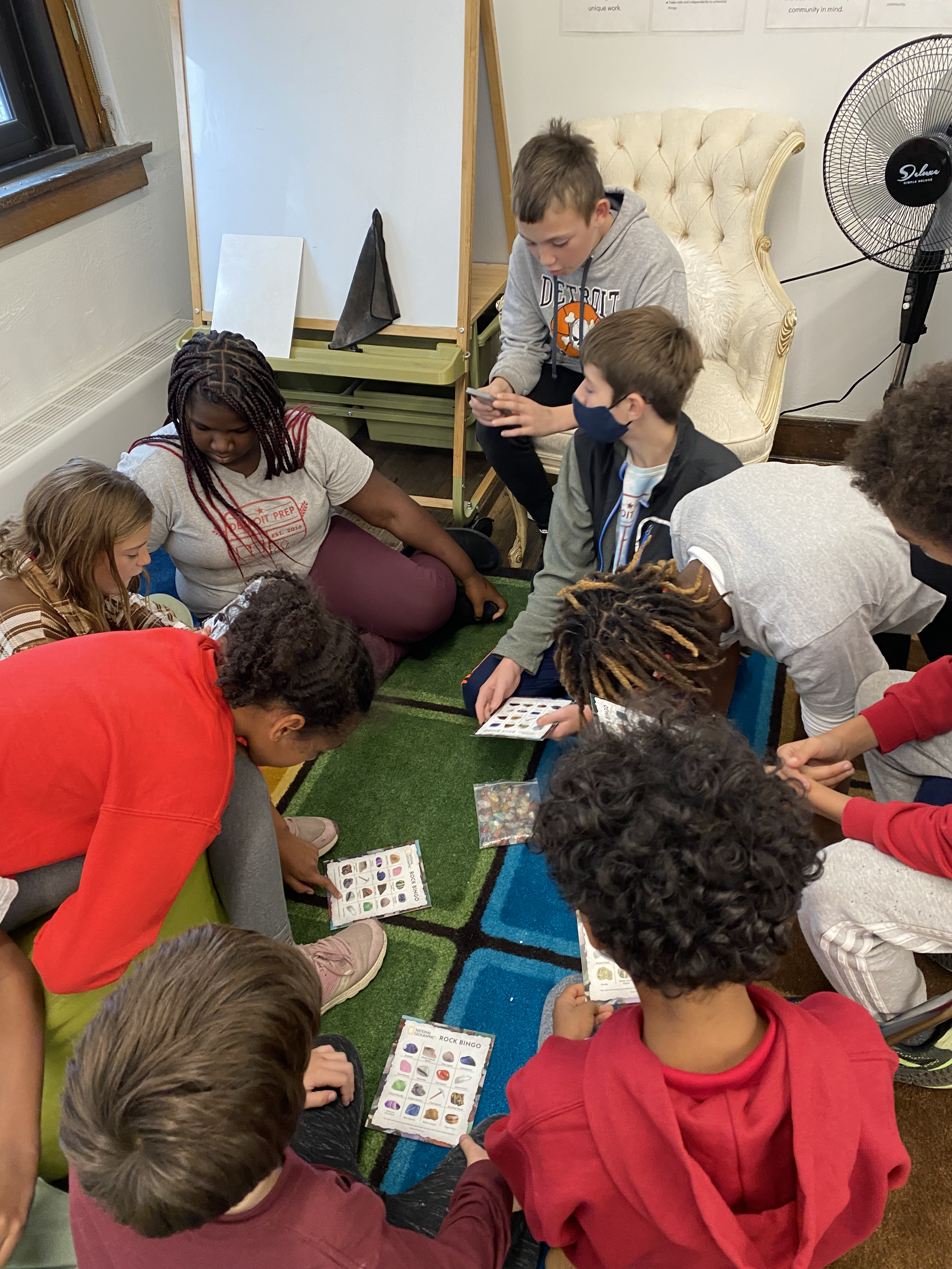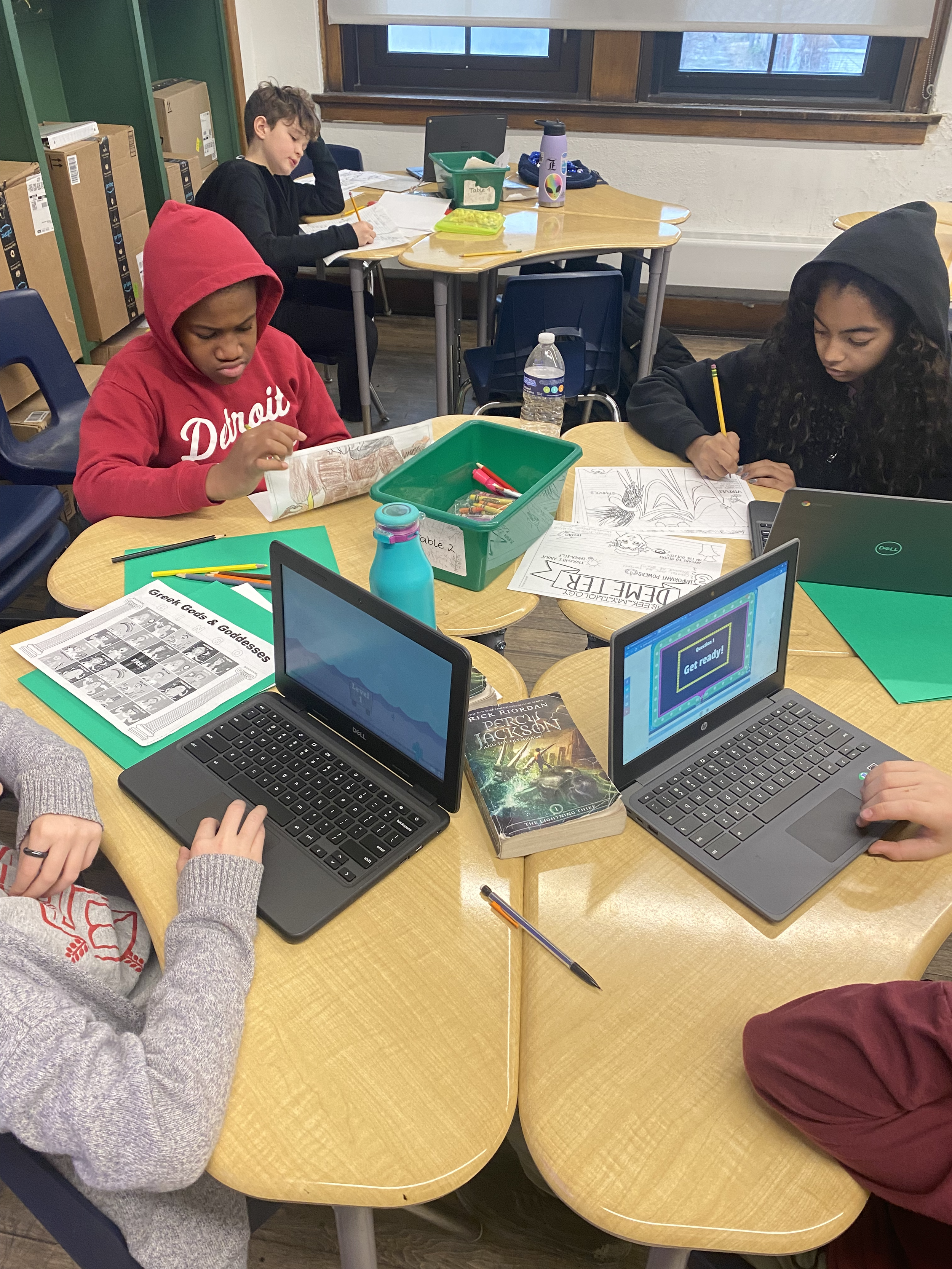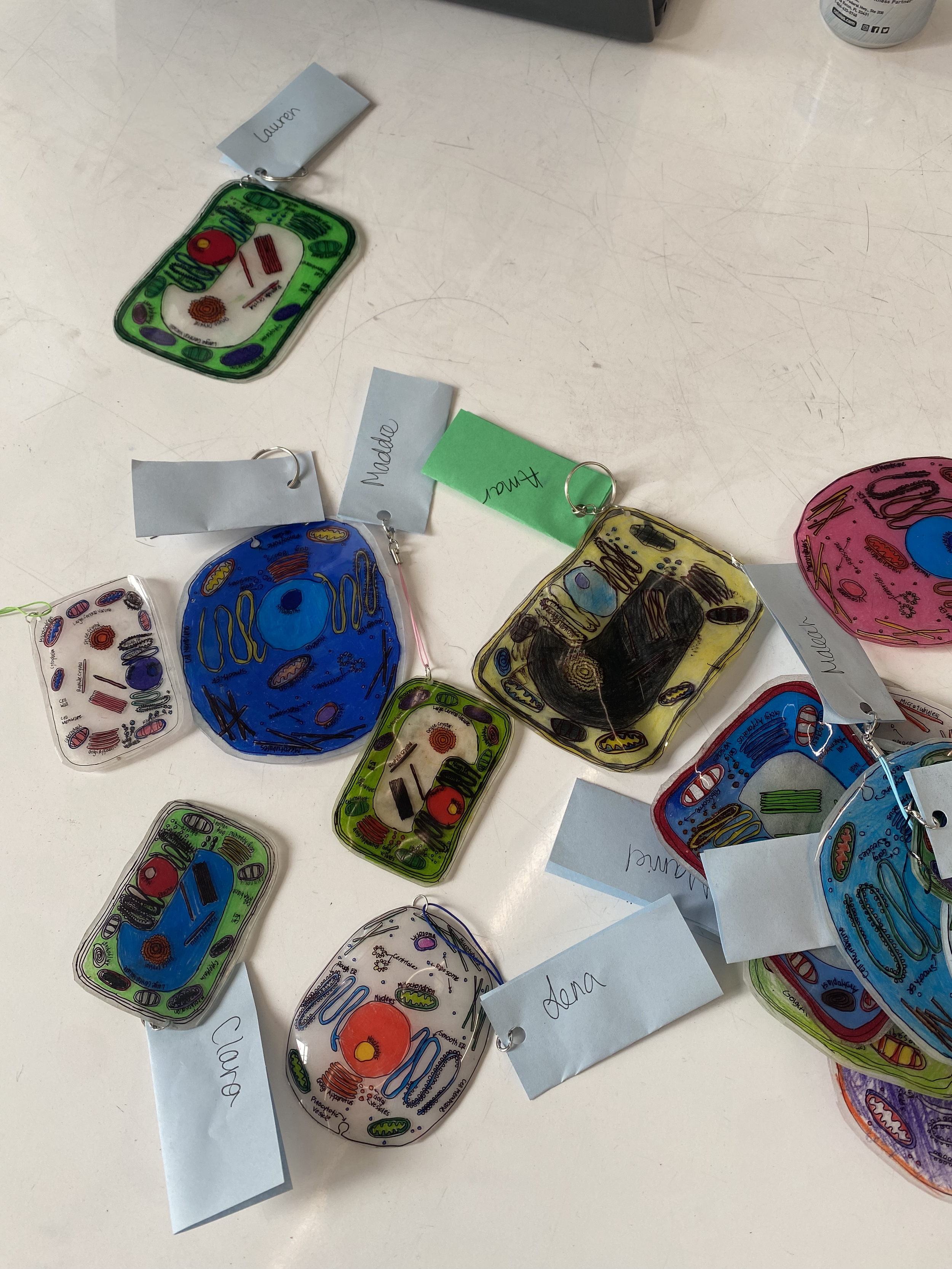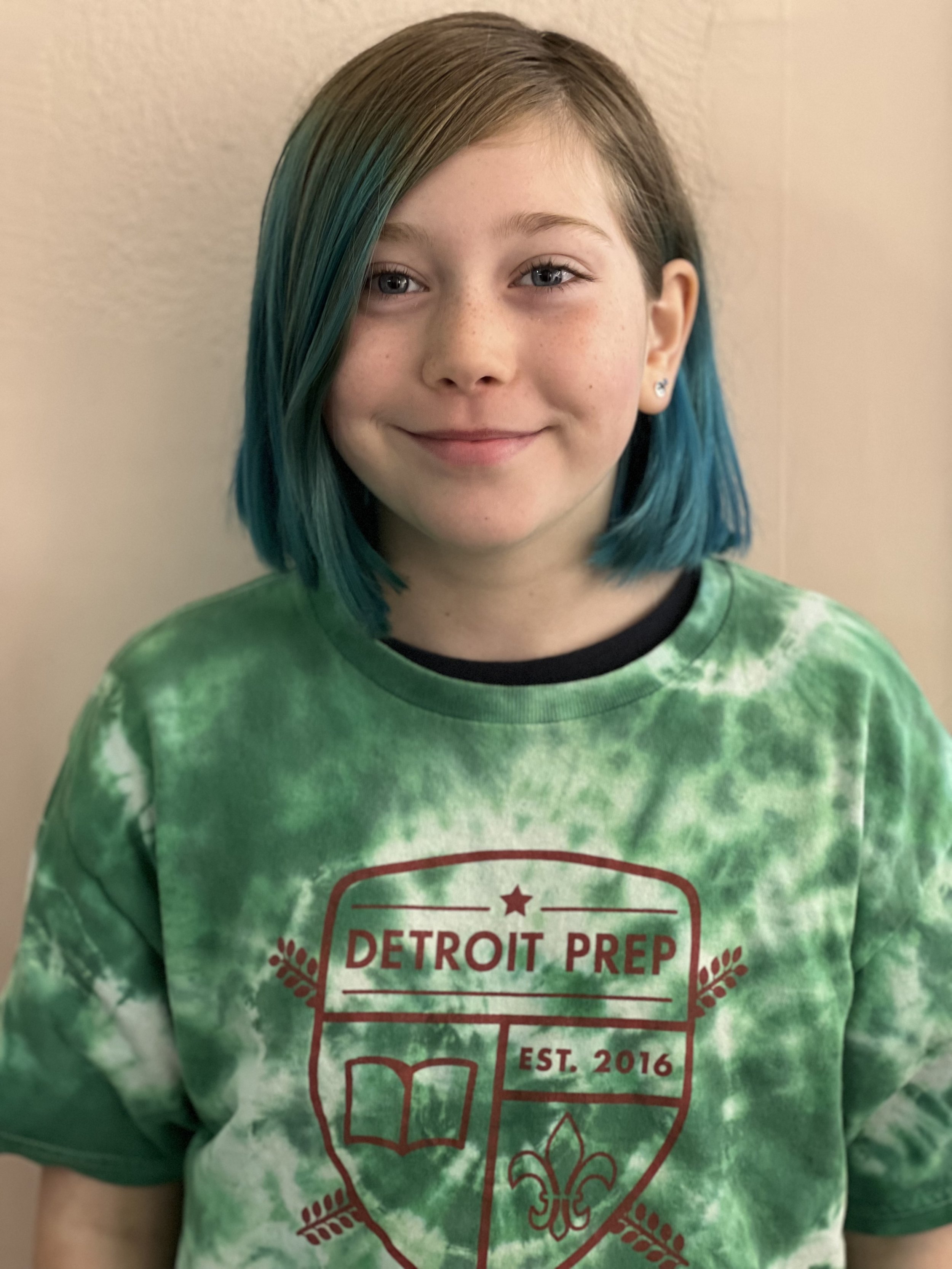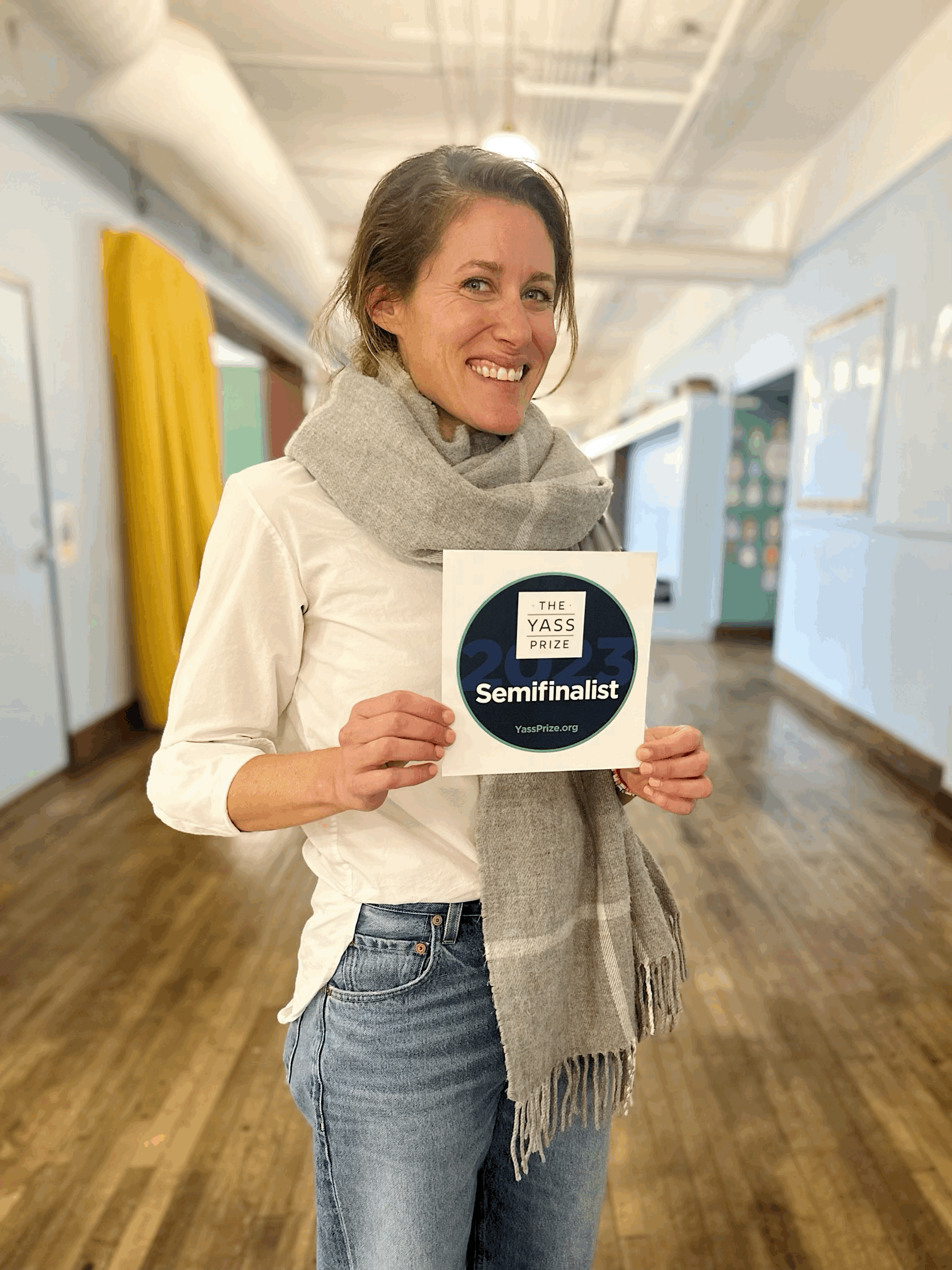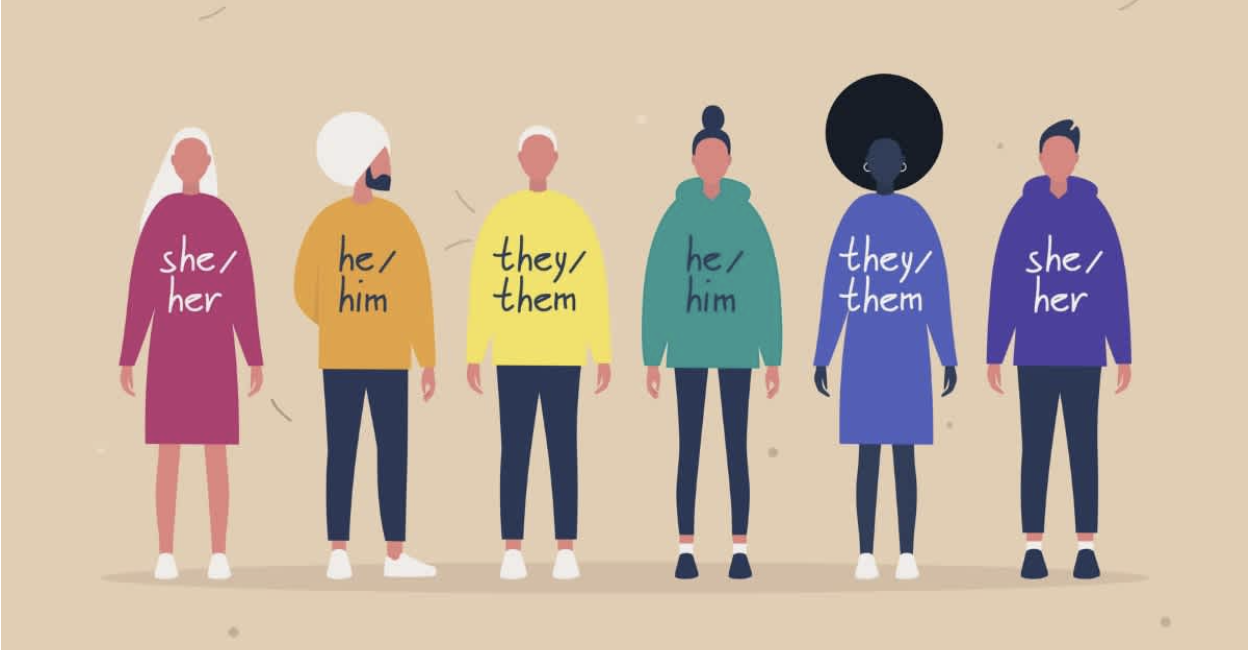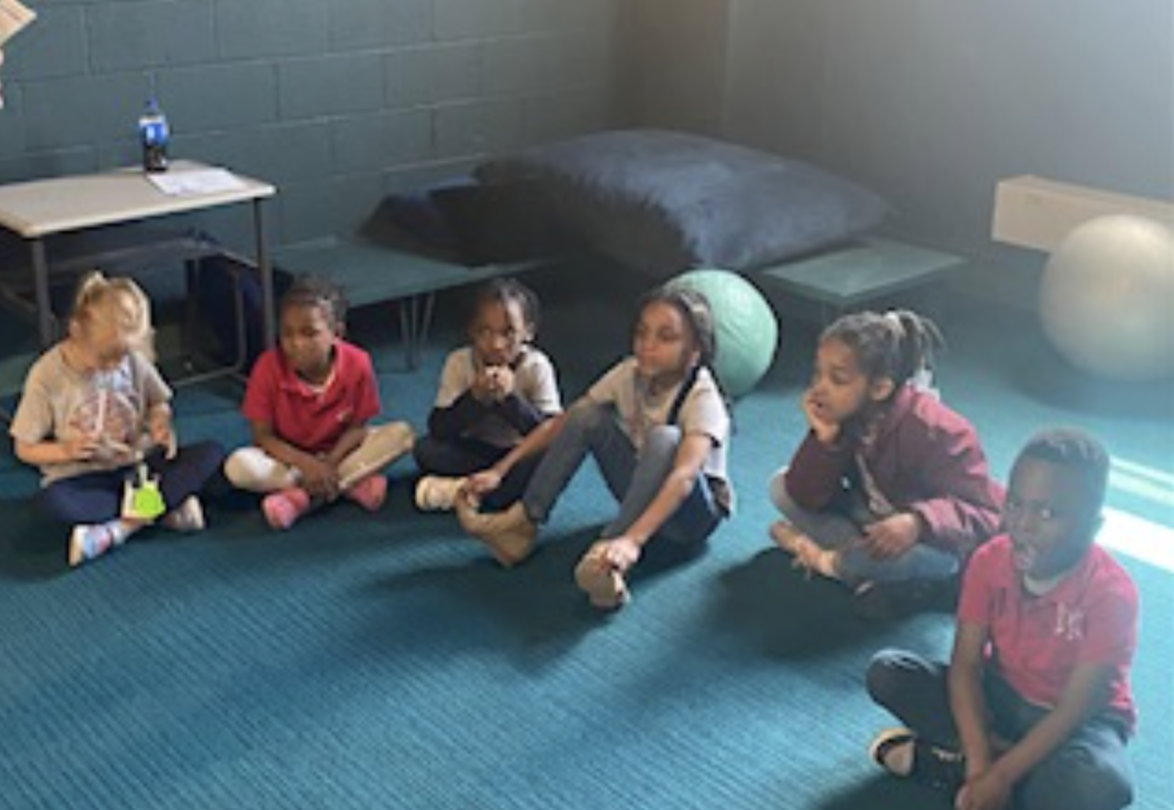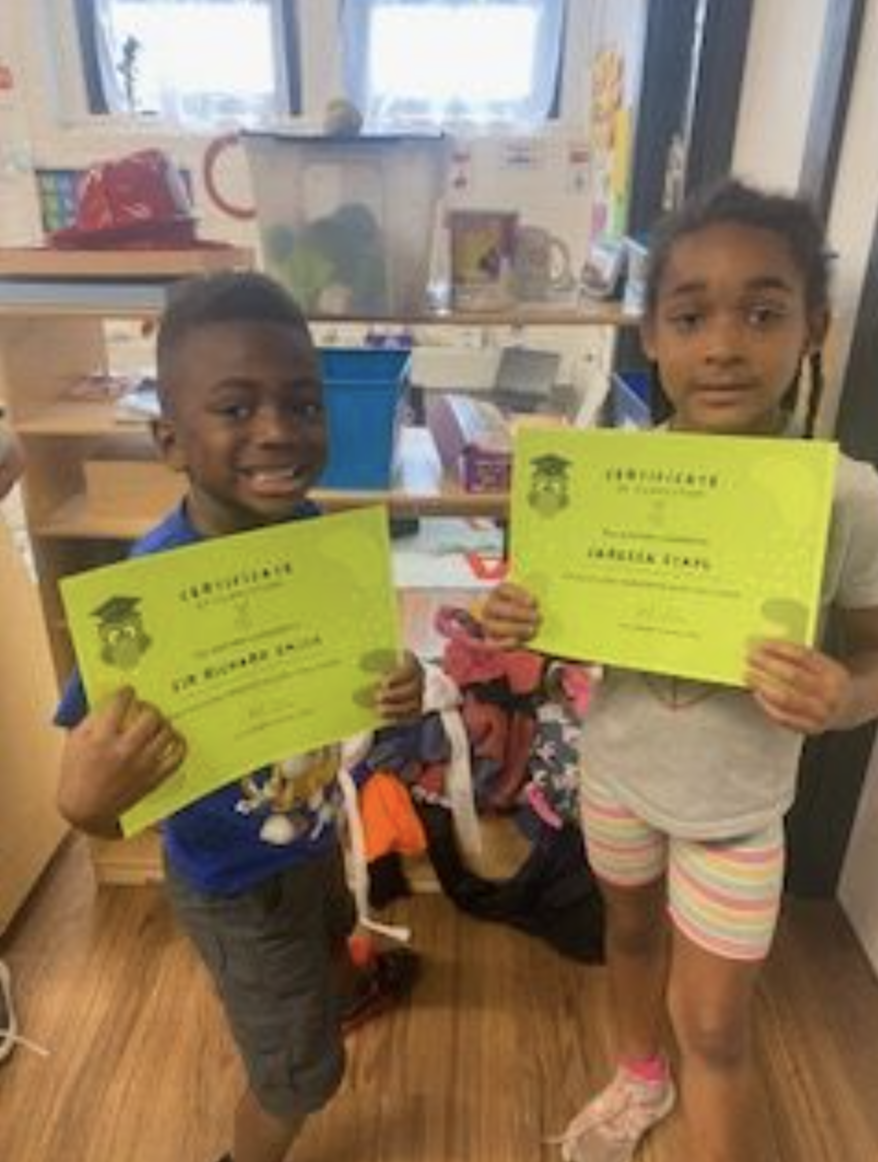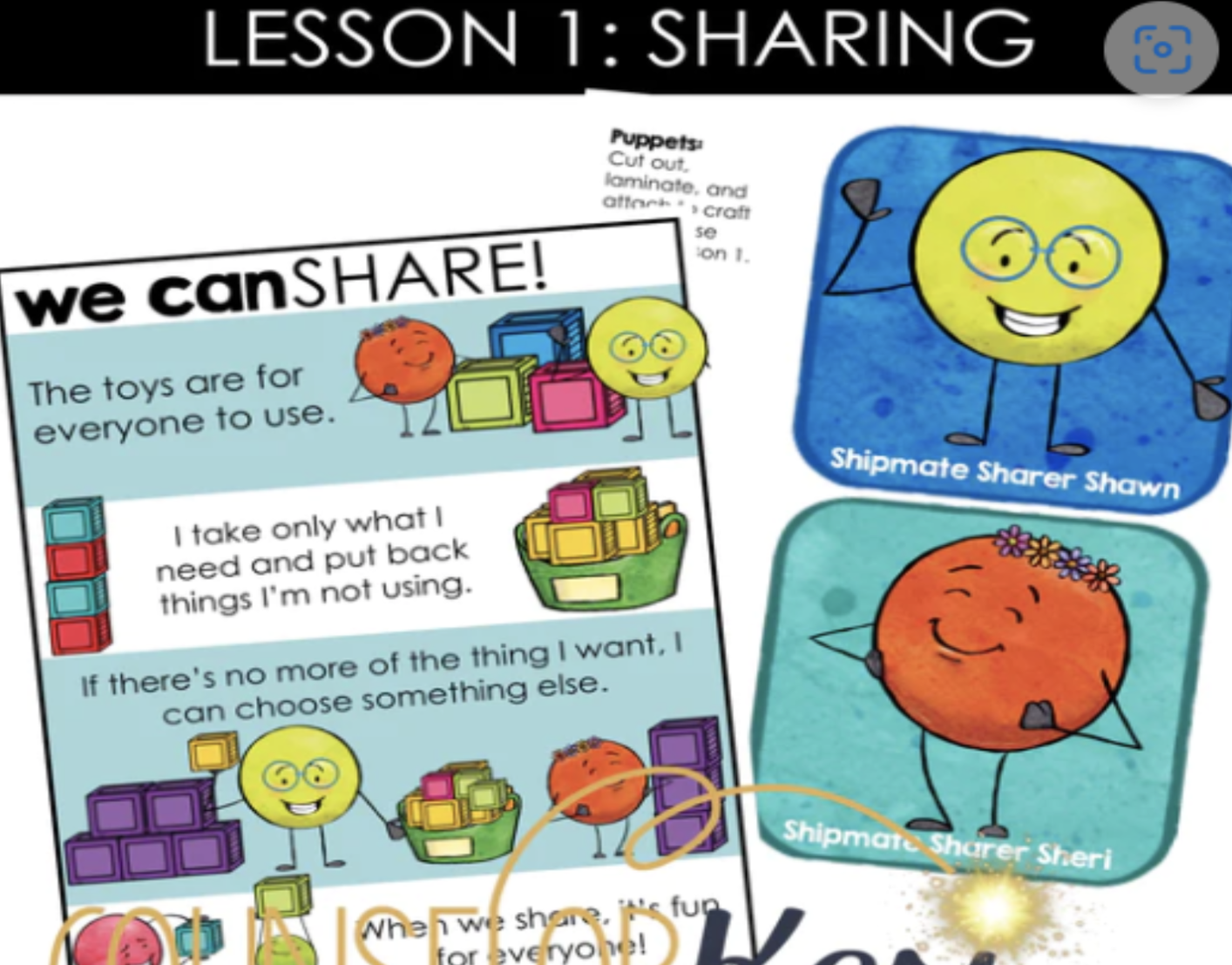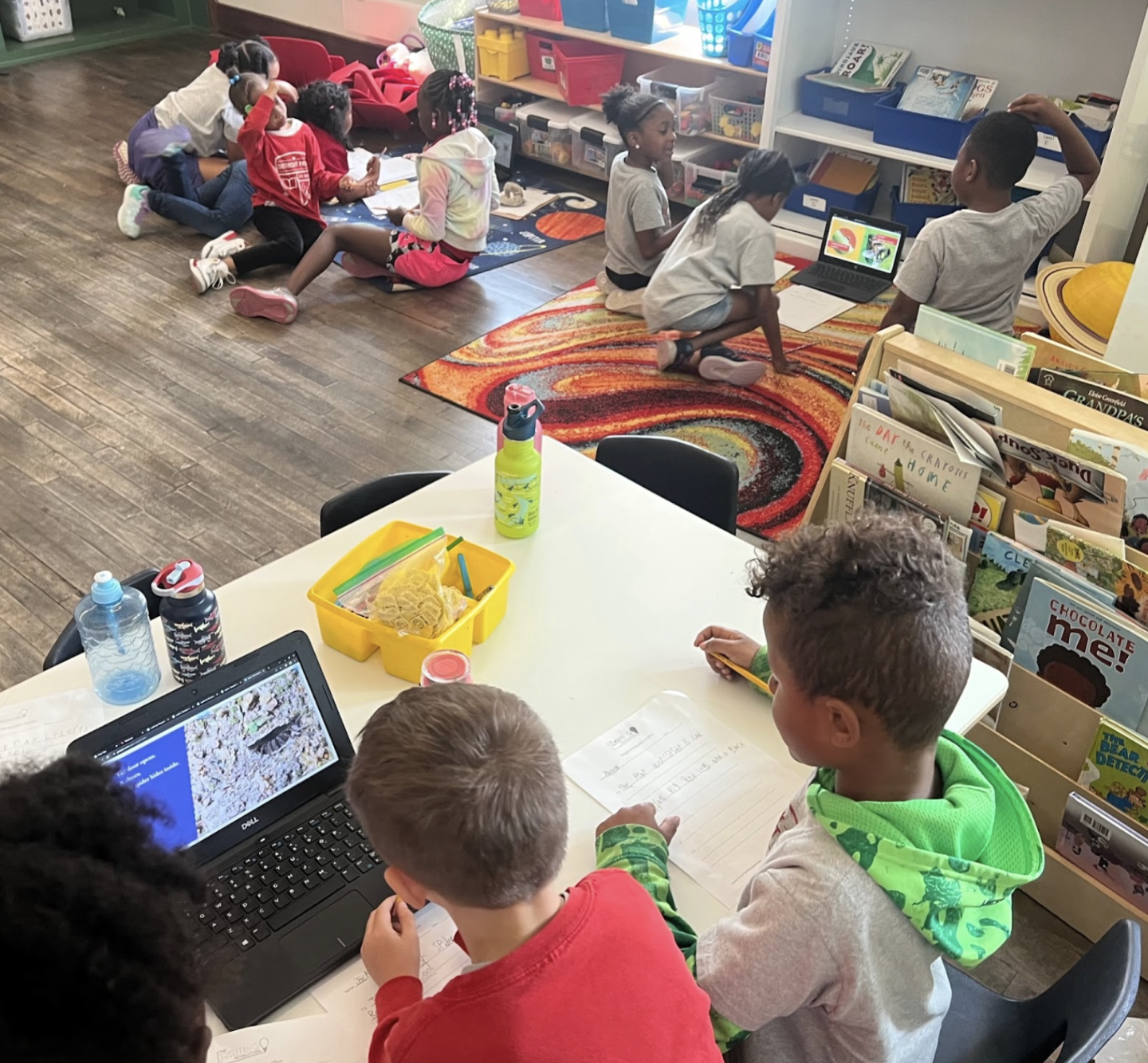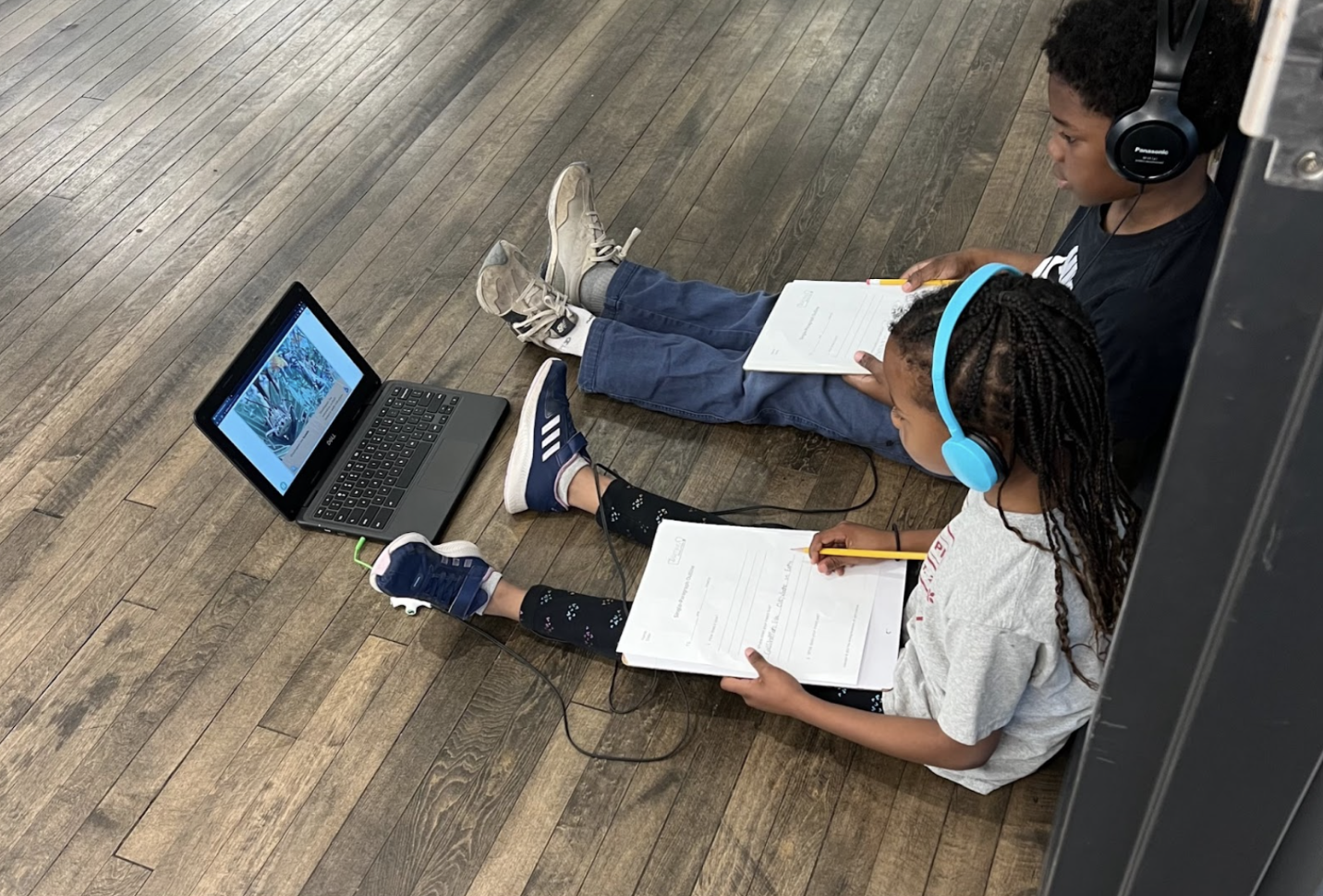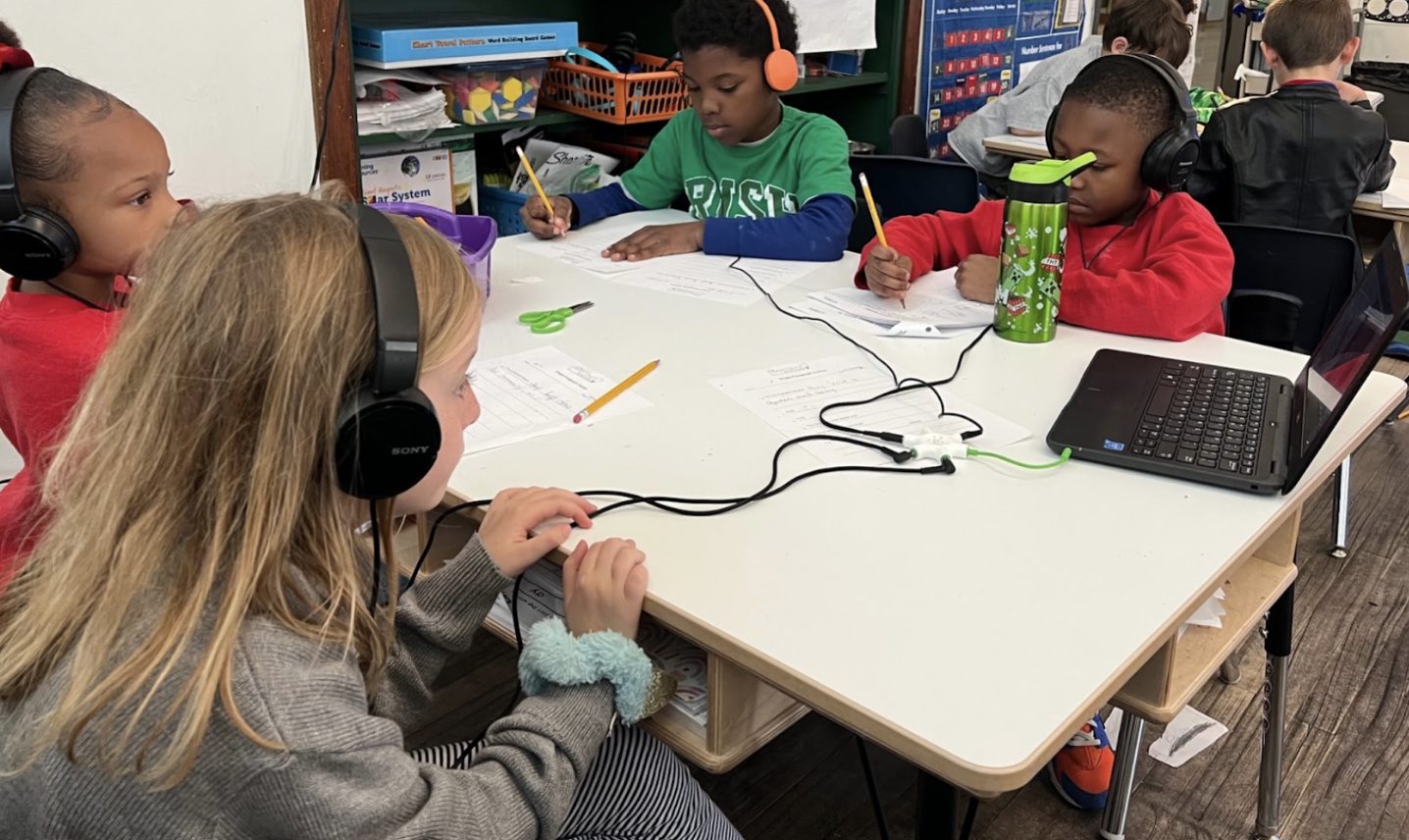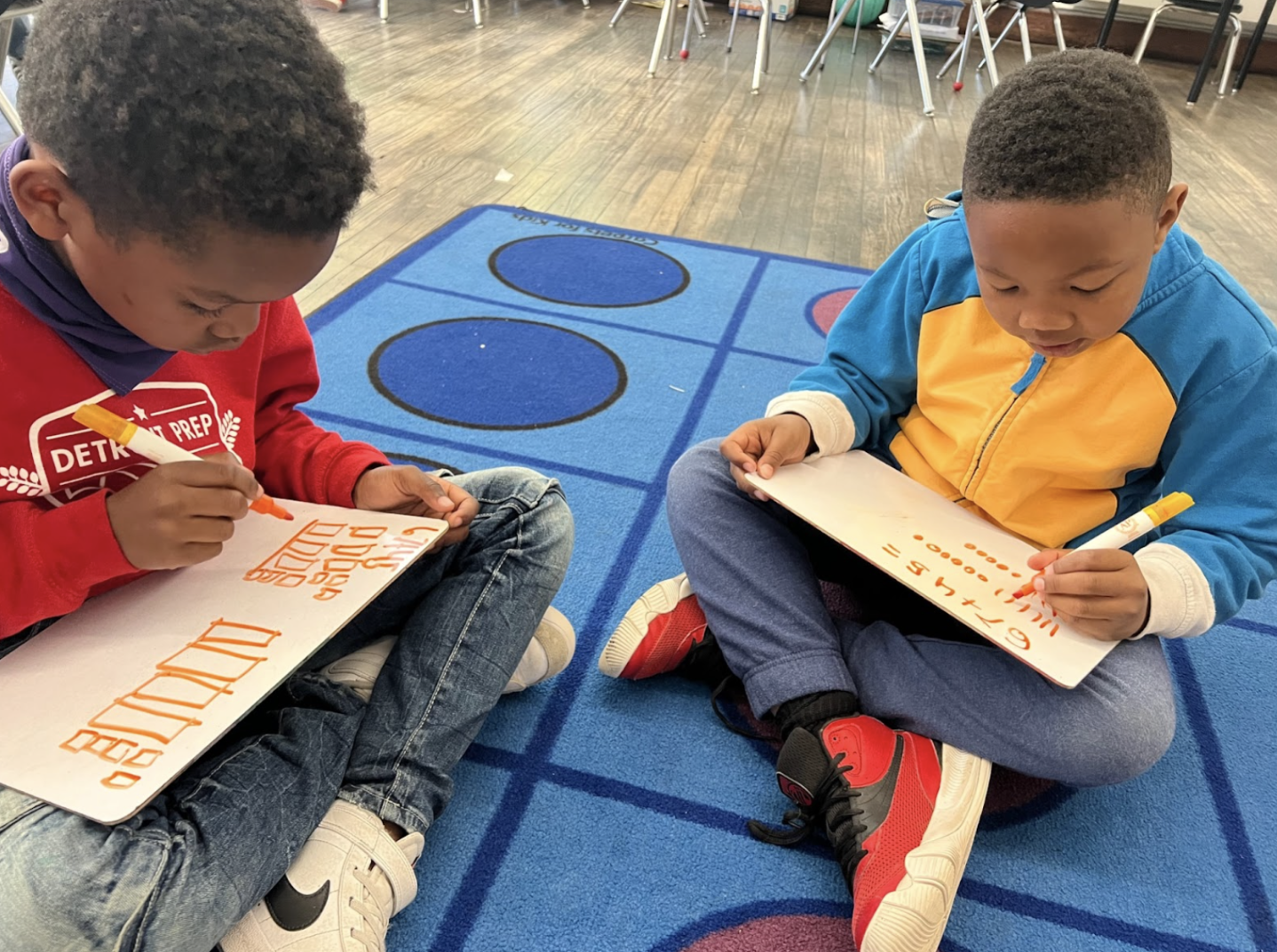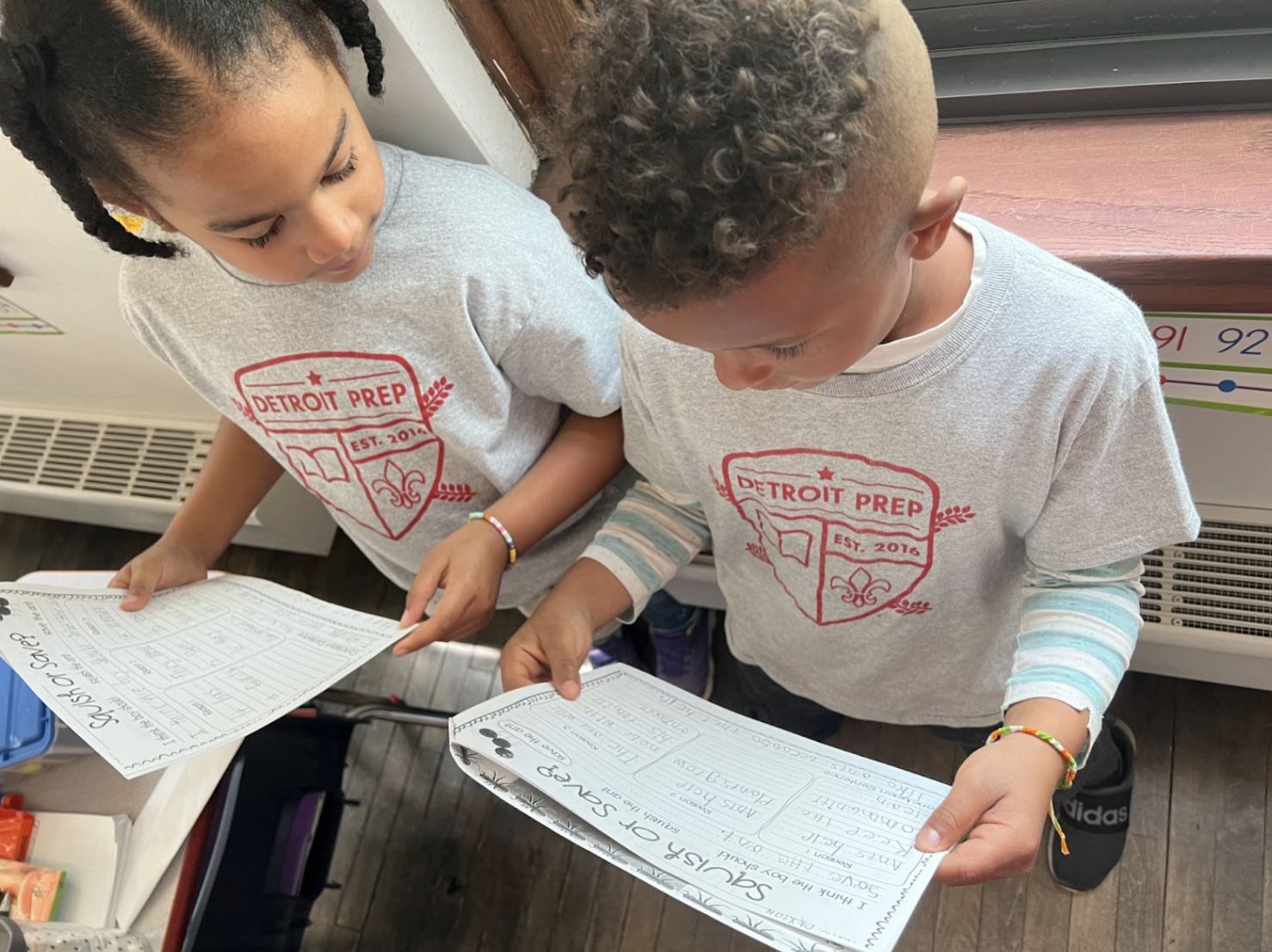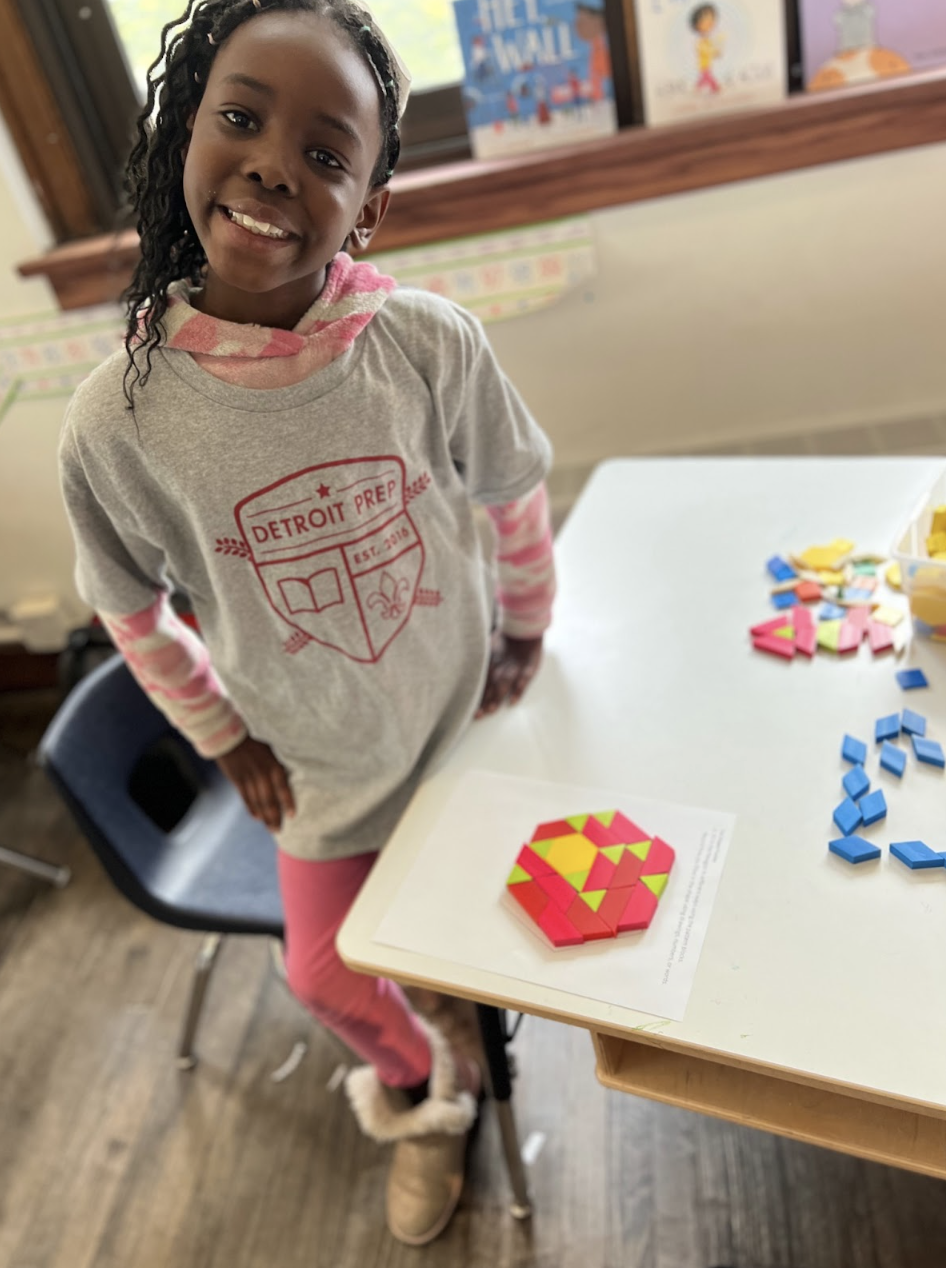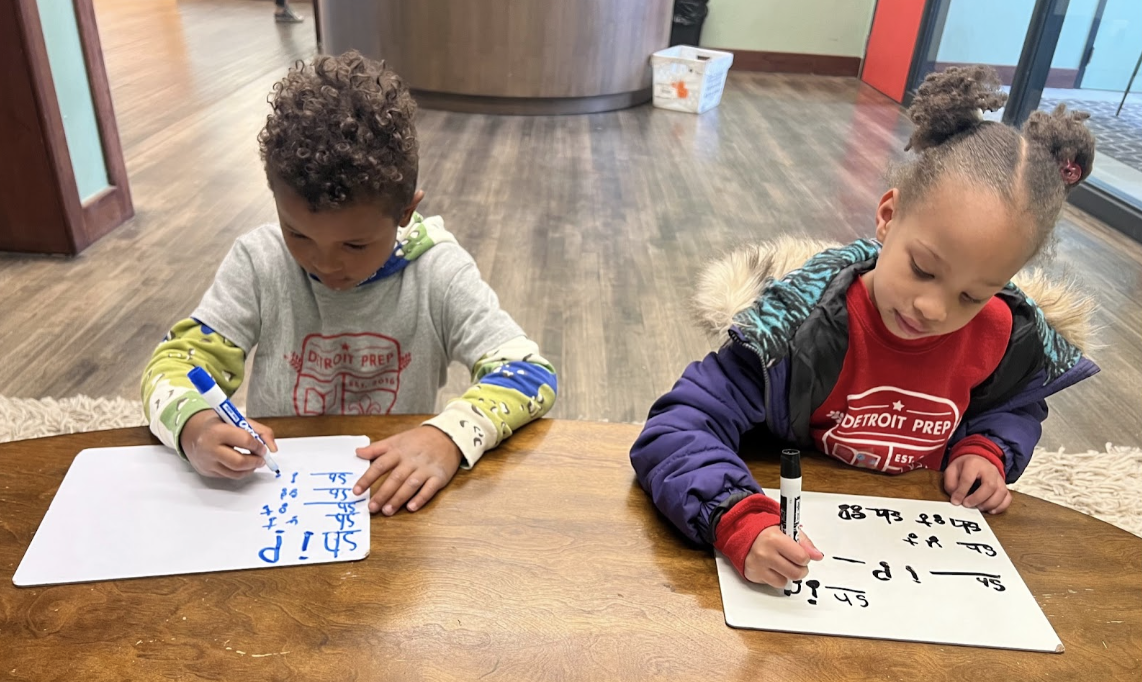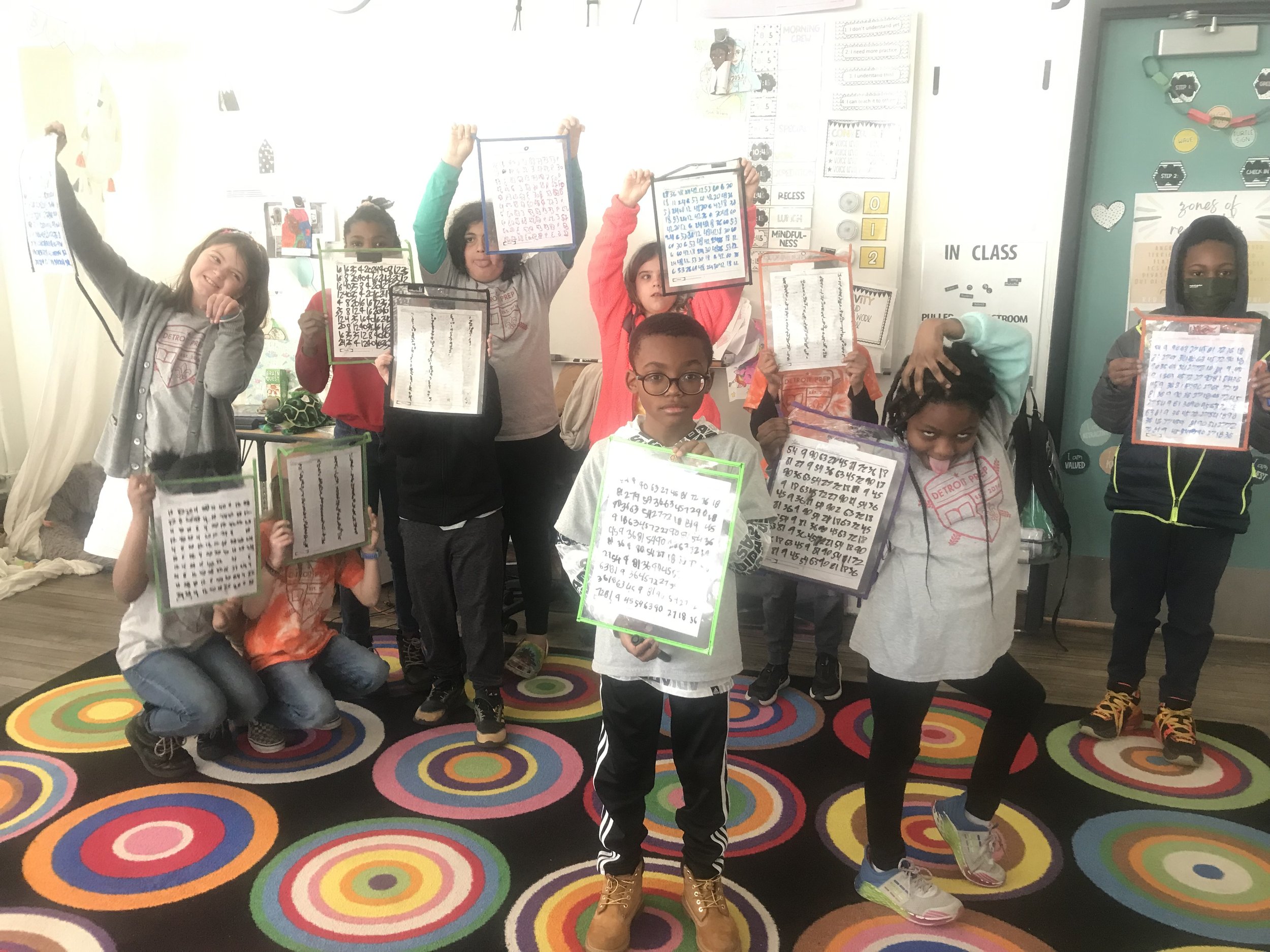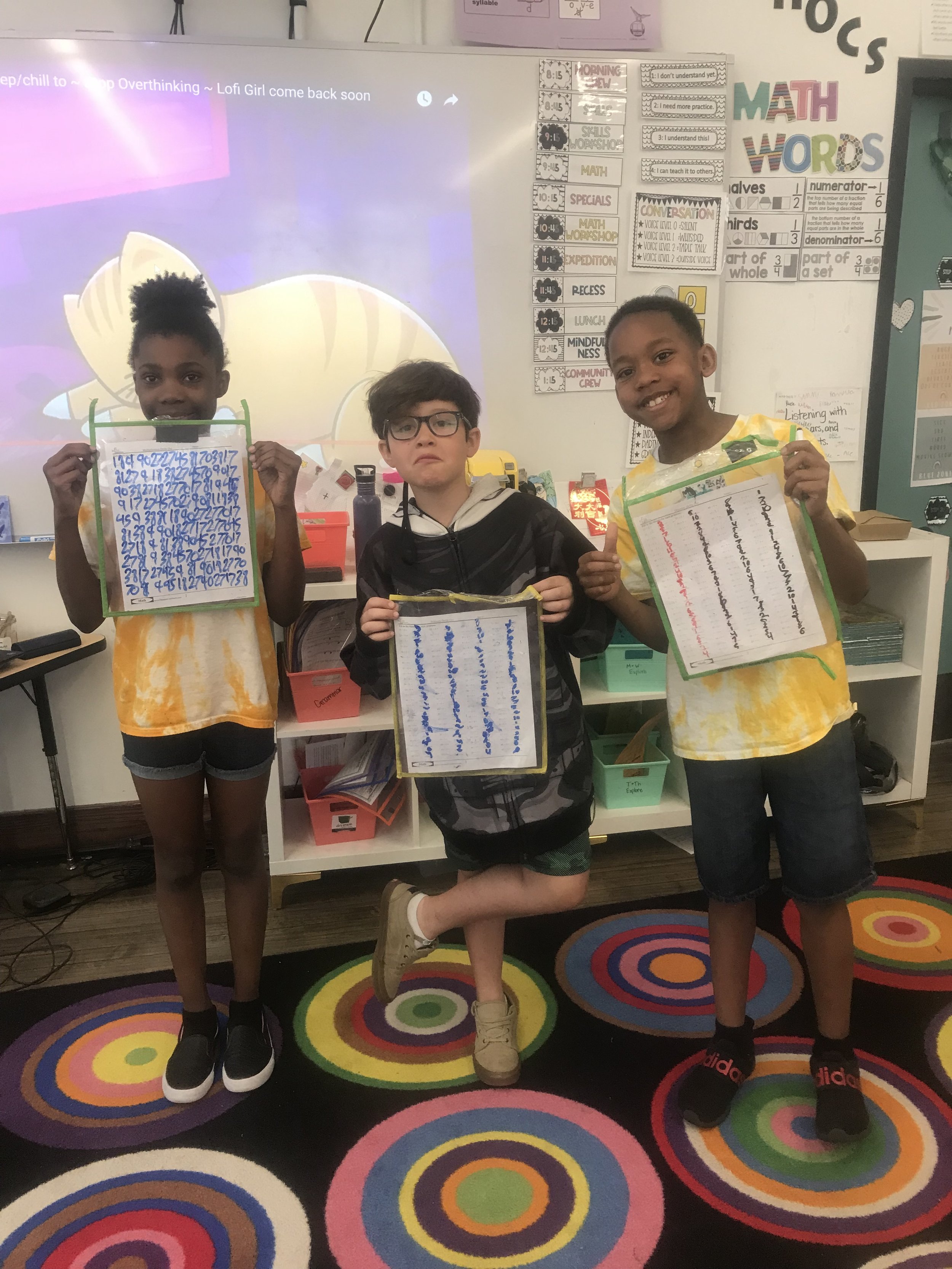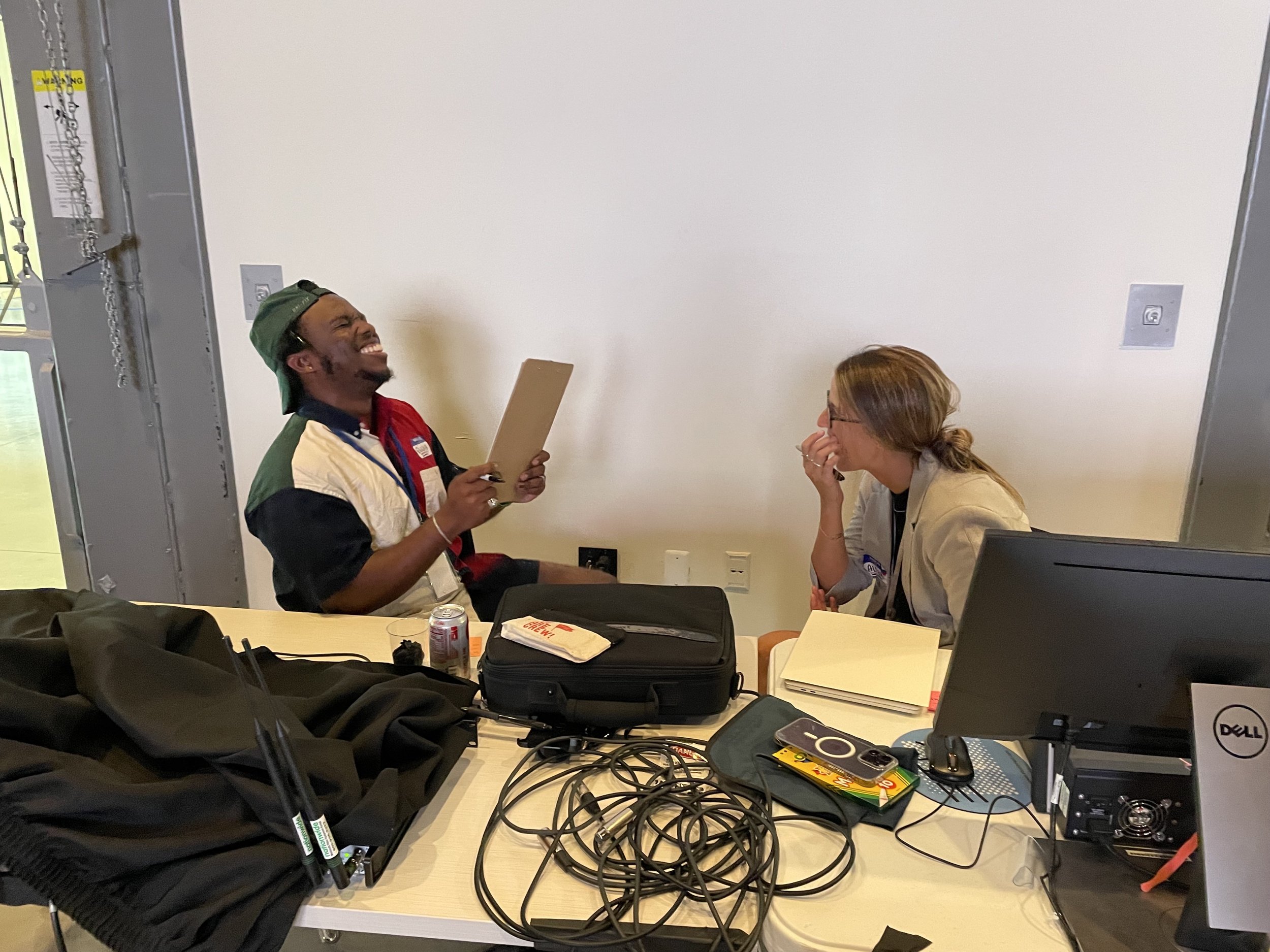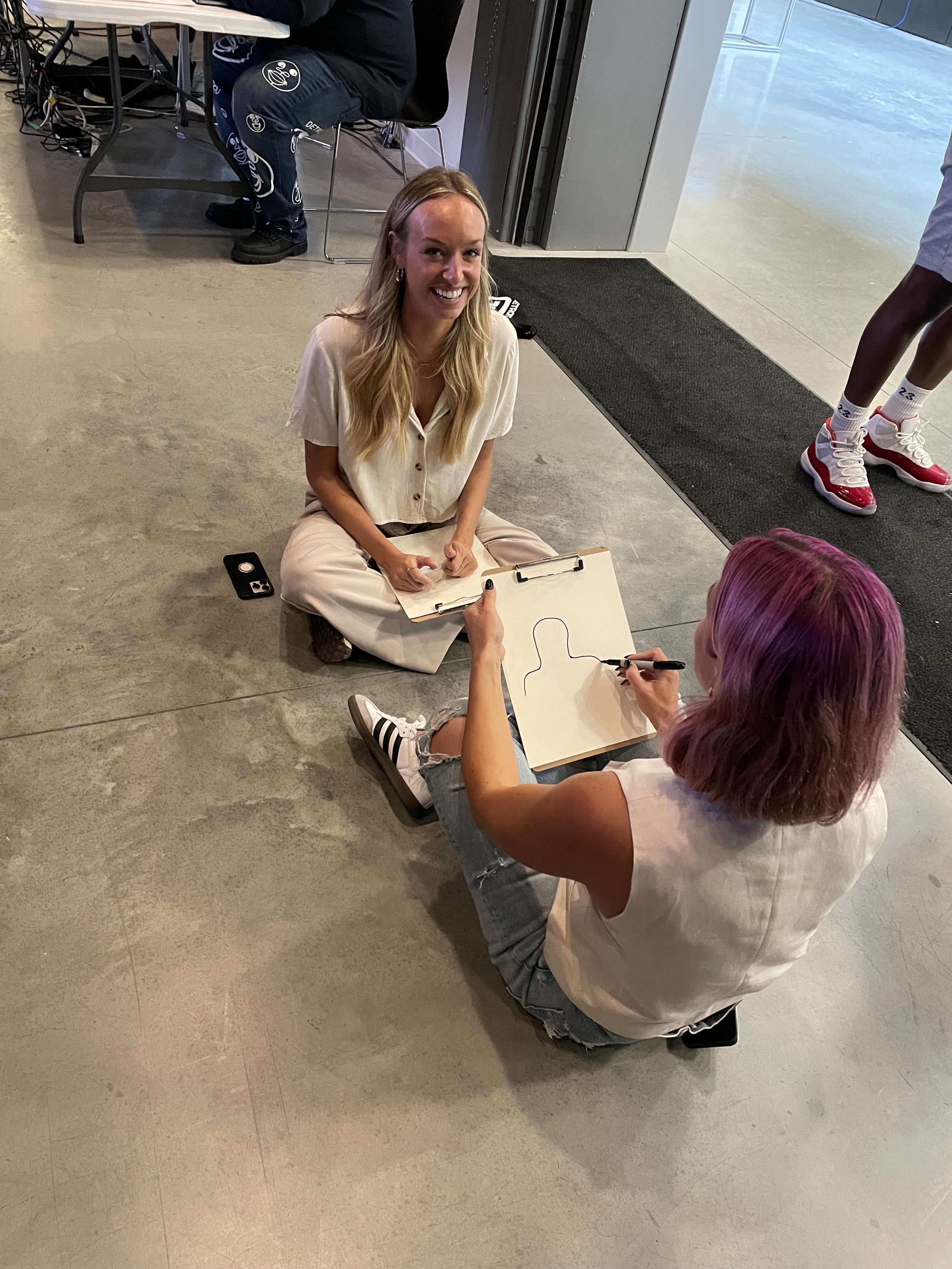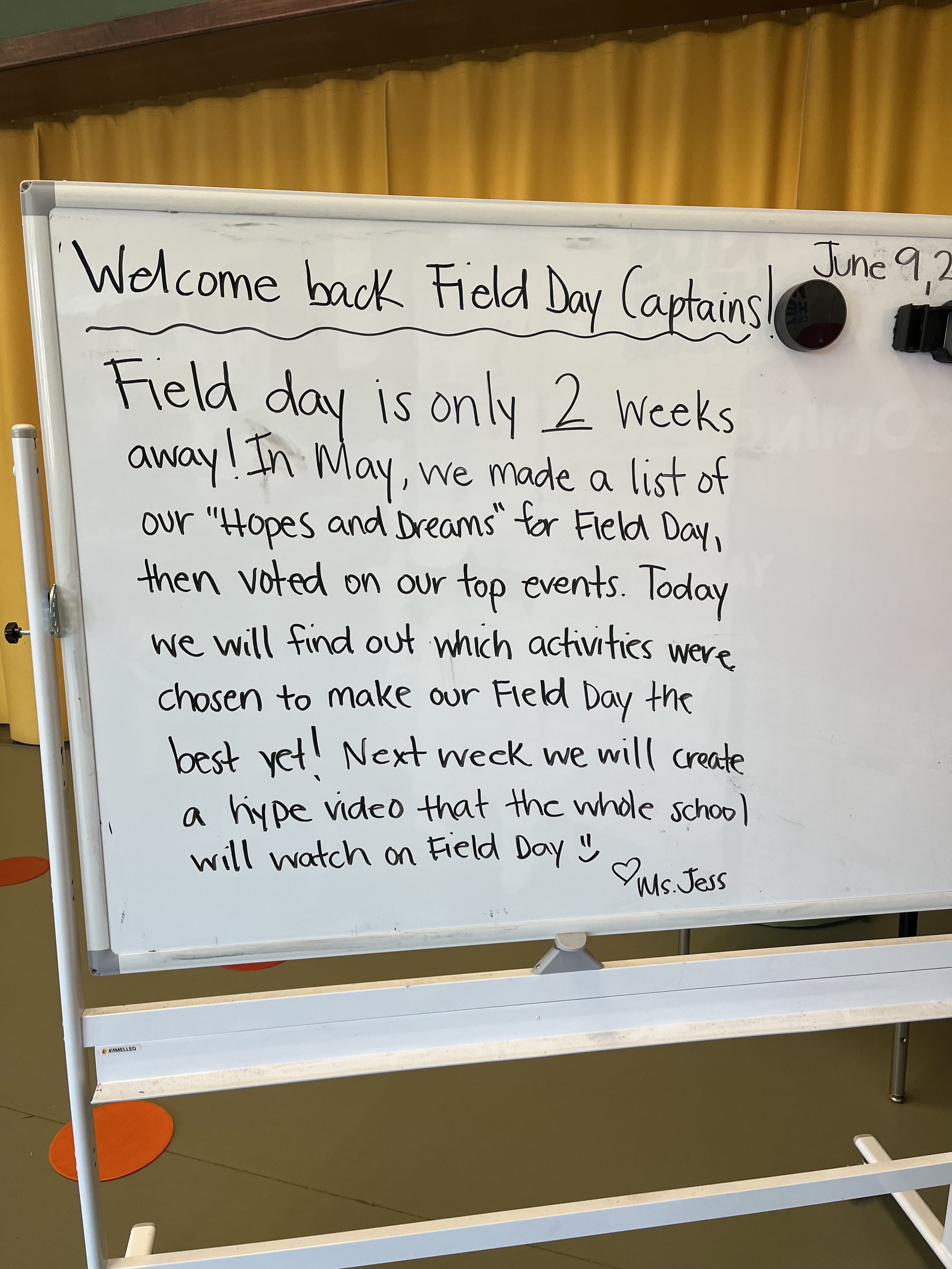Blog
Engaging Students in Labs Activities
One thing I love about our EL education curriculum is the expedition class. Instead of students taking the whole school year to learn about a broad overview of history and science, expedition allows students to zoom in on one topic for an entire term and become experts on the content. This term my 6th graders are becoming experts on the Ancient World by learning about Greek mythology. How fun!! But, sadly, I’m not their expedition teacher. I’m their math teacher.
I love teaching math and would never want to teach anything else, but that doesn’t mean I don’t get jealous of ELA teachers doing fun, innovative activities with students that just don't work with a math lesson. That’s why I love teaching my labs course!
Labs is an extension of expedition where students do aligned activities with their math teacher to continue engaging in their expedition topic. For 30 minutes a day students get to do some hands-on learning to deeply engage them in their expedition topic.
Labs has four activities sets: Engineer, Create, Research, and Imagine. Here are examples from my favorite activities we did last year:
Engineer: Shrinky Dink Cells
During the Under The Microscope unit, students used shrinky dink paper, sharpies, and colored pencils to construct and accurately label either an animal or plant cell, then I shrunk them in my oven to make keychains!
Create: Japanese Cherry Blossom Vases
During our expedition unit on Japanese Internment in the US, students learned about Japanese culture and created vase art and cherry blossoms using construction paper, markers, and pink tissue paper.
Research: Greek Mathematician Poster
During our Ancient World unit, students work in pairs to research an ancient Greek mathematician, then use their art skills to create an eye-catching poster, complete with a bust of their mathematician.
Imagine: Reader’s Theater: Rocks and Minerals Game Show
During the Rocks and Minerals unit, students complete a reader’s theater script in groups where the plot is game show with contestants named things like Ignee Us, Seddy Mentary, and Dr. Meta Morphic. It's a super fun way for students to learn facts about different rocks!
Student Reflection: Student-led conferences and middle school passages
One essential component of our work at Detroit Prep is student reflection. It is critical to our work in developing scholars as world-changers and leaders in their communities and our world.
There are several essential ways we build a reflective practice in our students. Some ways are through our habit of character reflections weekly, reflections after end-of-unit assessments or projects, and student-led conferences.
Beginning in kindergarten, students have the opportunity several times throughout the year to host their own academic conferences and present their work as a learner across content areas. Families and caretakers join and are able to ask questions about students’ work as well as opportunities for ways in which they want students to continue to develop and grow academically and in their character.
A culmination of student reflective opportunities is through something we called passage presentations. According to EL Educations model, passage presentations are, “Passage presentations are an opportunity for students to reflect on their learning and their readiness to move on to the next phase of their education.” Here is an example of a passage presentation as another partnering EL education school.
To offer additional opportunities for reflection, 4th-grade scholars from the Beech Crew have offered them incites and perspectives in their experience of their first Passage Presentation as a Detroit Prep scholar.
Aliya
What was it like preparing for passages? What did you need to do?
It was hard, you can't just say it easy, you had to do about 18 paragraphs. I needed to plan each paragraph or revise and edit all of them.
How do you think student-led conferences prepared you for passages?
Student-led conferences help me think more about my work in passages.
Why were the passages challenging?
Passages are challenging because you have to draft, get feedback and type and lastly present your 18 paragraphs.
What was your favorite part of passages?
My favorite thing about passages is my mom was there and i past other then that it was fine
Why do you think passages are important?
I think passages are important because you can go to upper school and finish your year in low elementary school.
How will you experience passages prepared for experiences outside of school?
How will I experience passages preparing for experience outside of school because if you don't pass you have to redo it from stretch and you have to be working on it for summer break.
Genevieve
What was it like preparing for passages? What did you need to do?
To prepare for passages I had to first, draft my essays and my paragraphs then write them out again on lined paper. Then I got feedback and typed my passage! What was it like to prepare for passages? Passages were fun, It was fun because I got to listen to music so I could focus more.
How do you think student-led conferences prepared you for passages?
I think that my student-led conferences prepared me for passages because I could share my passages with my mom and dad and they could give me some feedback so I could Improve my work.
What was challenging about passages?
Something that was challenging about my passages was that I had to Write 4 ESSAYS!! Another thing that was challenging was that I had to make multiple drafts so by the end of the day my hand was hurting!
What was your favorite part of passages?
My favorite part of passages was when my teacher Ms Abbey told me that I PASSED 4TH GRADE!!!!
Why do you think passages were important?
I think passages were important because it tells my 5th grade teacher what I know and what I need to grow in.
How will you experience passages prepare for experiences outside of school?
Passages will help me out of school because I will know more about drafting essays and typing and writing essays.
Brayden
What was it like preparing for passages? What did you need to do?
What it is like preparing for passages is in a few months of school we start on the passages and at the end of the year we edit it and we type it and presited.
How do you think student-led conferences prepared you for passages?
It prepared me because I know it is my family and my teacher and both of them share their work.
What was challenging about passages?
What was challenging about passages is you have to stand on a podium and be recorded by your teacher.
What was your favorite part of passages?
My favorite part is being done and being able to go to 5th grade.
Why do you think passages are important?
I think it is important because you get to share all of the work you did that year and how you have grown and what you still need to work on.
How will you experience passages prepared for experiences outside of school?
It will help me by getting a job and presenting to my boss.
Jackson
What was it like preparing for passages? What did you need to do?
Preparing for passages was not easy, it was a lot of pressure typing all thoughs paragraph. Something I needed to do was draft my skills artifact my math artifact, my expedition artifact and my choice artifact and type all of them.
Do you think student-led conferences prepared you for passages?
Yes because for student -led conferences it is gets you, Ms. Abbey, and your parents, and you are sharing your work and passages are the same except you are standing at a podium.
What was challenging about passages?
Something that was challenging about passages was that we had to go in order, which was difficult because I wonted to start with the one that I felt most comfortable with.
What was your favorite part of passages?
My favorite part of passages was being done with typing and being done with presenting my passage.
Why do you think passages are important?
Passages are important because we are sharing our best work throughout the year in skills,math,expedition and art and we only have one passage in 4th grade.
How will you experience passages prepared for experiences outside of school?
If I got a job and I needed to give a speech which is like a passage I would not be scared because I have done something like it.
Our Work is Permissionless || The Yass Prize
When I first learned about the Yass Prize, I was blown away by the intentional principles that guide the efforts to find, reward, celebrate and expand best-in-class education organizations:
Sustainability - meaning your practice can be funded independently without continual philanthropy by utilizing public programs that fund the entity where students are learning, regardless of sector.
Transformational with innovative new approaches that employ 21st century knowledge and technologies, changing the way students are educated and rich in content that is relevant and impactful across all communities.
Outstanding, or demonstrably successful by every measure that matters.
Permissionless — meaning your work requires no permission and is free to exist and thrive without dependence on regulatory bodies whose rules are often at odds with parent demands and student needs.
Our school district has been named as semifinalists for the prestigious Yass Prize, which is considered the Pullitzer of education innovation!! We are utterly honored, grateful, and so excited to be seen and validated for what we have always known to be true. We think that we were made to win!
The STOP principles are beyond inspiring to me - and they are at the heart of everything we aspire to do in our work at Detroit Prep and Detroit Achievement Academy!
In my role as Head of School at Detroit Prep, this looks like supporting our district- and schoolwide efforts to create sustainable systems for our adult crew – from maximizing our daily schedule to include common prep time to allow for grade level collaboration, to working with our leadership teams to develop and sustain teacher leadership pipelines and opportunities, to working with our staff-led Sunshine Committee to plan monthly celebrations for our teammates - coming together for birthdays, holidays, and life milestones. It looks like viewing our transformational work along three dimensions of student achievement: culture & character, mastery of knowledge and skills, and high quality work in our student led conferences and celebrations of learning. It looks like our amazing teachers and Directors attaining outstanding academic and socio-emotional results - outpacing our city, county, state, and national comparison groups in academic outcomes like standardized test scores.
The principle that is top of mind for me right now, though, is permissionless – the ways our innovative model and support from our network team and school board allows us to employ a “whatever it takes” theory of action while working together to support and develop every student as a learner, leader, and world-changer. Our crew commits to holistically supporting each child, and this permissionless approach makes that truly and authentically possible.
It looks like Ms. Fiske, our Director of Upper School, revamping our Friday specials to be authentically elective, with students choosing clubs that align with their true passions and interests and our incredible Upper School and Specials teams sharing their own passions and interests - advanced art and music, school newspaper, French, GSA, yoga, graphic design, and advanced math - to show student’s what’s possible. It’s our wonderful school social workers, Ms. Briana and Ms. Aly, coordinating a Giving Tree during the winter holidays to ensure every family can celebrate with meaningful gifts, and a parent-organized Costume Closet so that every child has something special to wear for Halloween.
It’s our Operations and Student Support Team nurturing family groups called Groves, named for our six Habits of Character - where families and households are organized into smaller groups geographically, to create carpools, encourage resource sharing, and facilitate long term relationships. It’s our fabulous teachers like Ms. Rebecca, Ms. Johari, Mr. Terry, Ms. Munira, Ms. Gloria, and Ms. Abbey offering tutoring, coaching, and sponsoring after school activities outside of the school day. It’s Mr. Steffon leading a weekly boys group to teach essential life and communication skills.
The countless ways our school community goes beyond what’s often considered possible within and beyond the school day is seemingly endless, and embodies the permissionless way our team supports the whole child.
- Jen McMillan, Co-Founder & Head of School
Honoring Indigenous Peoples Day
At Detroit Prep, we are committed to honoring Native and Indigenous communities as well as celebrating their rich traditions and diverse cultures. There are many ways to honor Indigenous peoples everyday and I am excited to share some of my favorite books that focus on Indigenous characters.
Fry Bread: A Native American Family Story
Written By: Kevin Noble Millard and Juana Martinez-Neil
Fry Bread is an award-winning picture book that focuses on the love of a family and how so much of culture and tradition centers around food. It is a great depiction of what it means for these characters to grow up as a Native American family and how they intertwine traditions into their daily lives.
We are Water Protectors
Written By: Carole Lindstrom
We Are Water Protectors follows the story of a young Indigenous child and activist as she fights alongside her family and friends to save the Earth's water supply from human negligence and harm. This book is a great example of coming together with one's community to protect our natural resources. This book also happens to be my favorite to read with students.
Bowwow Powwow
Written By: Brenda Child
In this story, Windy Girl gathers stories of traditions, dancing and gratitude from her Uncle. When Uncle and Windy Girl attend a powwow, Windy watches the dancers and listens to the singers. She eats tasty food and joins the family around the campfire. This book allows readers to experience traditions alongside the characters while learning about their culture as well.
We are Grateful: Otsaliheliga
Written By:Traci Sorell
This story follows a Cherokee community throughout a year, where they show us how to live with thankfulness and celebration. Written by a member of the Cherokee Nation, this book uses many Cherokee terms that allow the reader to connect to the language.
The Water Lady
Written By: Alice McGinty
For many of us, access to clean water is something that we don’t think about daily. Based on true events, in this story, Cody’s family relies on the service of Darlene Arviso to deliver water to their home. This is a heartfelt and meaningful story that focuses on the importance of community.
Understanding Gender Pronouns
Did you know that International Pronoun Day takes place every year on the third Wednesday in October?
At Detroit Prep, we know that every student is full of unlimited potential. We see children as learners, leaders, and world-changers! We also want to help students build on our Habits of Character and engage with the world as responsible, curious, compassionate individuals. In order to help students see themselves the way we see them, using a student’s correct pronouns is crucial for teachers and adults to convey respect and understanding about their identities.
So what exactly are pronouns?
Pronouns are the most common way that people refer to one another outside of using proper names. They are words that replace a noun. Often, we use pronouns to refer to other people! (For example: SHE went to the soccer field, while HER friend waited at school.) There are LOTS of different pronouns that people use, including but not limited to:
She/her/hers
He/him/his
They/them/theirs
Y/Em/Eirs
Ze/Zir/Zirs
Some people even choose to use NO pronouns. Those individuals may prefer for others to use their name in place of a pronoun, OR have another way they want to be identified. (For Example: Bryan’s dog is as strong as Bryan’s father.)
Everyone has the right to decide what pronouns they go by, including students. It is everyone else’s responsibility to use those pronouns correctly. At the core, we all want to feel recognized and seen. Using a person’s correct pronouns is an easy way to show respect to others. It’s important to ask others what their pronouns are, and then use them correctly in conversations, so that we are inclusive of all identities and perspectives.
Here are some examples of using pronouns in conversations:
Their homework is not finished. They need to work on their homework during recess.
Ze hates avocados. Zir favorite food is pizza.
She told me that there was a mosquito in the house. Her brother had an itchy bug bite.
His answer was incomplete, so the teacher asked if she could help him.
There are times that you might mess up someone else’s pronouns – that’s ok! What matters when you use incorrect pronouns or misgender someone is learning from your mistake so that it does not happen again. Here is an example of how to correct a pronoun mistake:
Apologize Briefly
The first step to take when you have referred to someone by the wrong pronoun is to acknowledge it. Doing so makes it clear that you understand you've made a mistake.
An example of an appropriate step after realizing your mistake would be, "I apologize, I said he and that person's pronouns aren't he/him."
Correct Yourself
Once you've acknowledged your error, immediately use the correct pronoun. An example of how to express it is, "Her pronouns are she/her. She went to the bank."
Move On
Lastly, but just as importantly as the previous steps, once you have apologized and corrected the situation, you can move on from it right away. There's no discussion or processing about the issue needed. Just continue with the conversation right where it left off, and let everyone digest what happened without further commentary.
Using someone’s correct pronouns demonstrates respect for others. It also makes a difference to many individuals who often face ridicule or bullying for “being different.” Please take the time to ask about pronouns and use them correctly, with our students and with others. When we show respect for others, our children will be sure to notice and follow our lead!
It Takes a Crew
At Detroit Prep, it is truly a team effort, and all that effort pays off! I have never worked at a school that has such a comprehensive wrap-around plan for each and every student. The meetings we hold to plan for student success are so intentional and specific and include clear accountability so that all team members know their next steps and can envision the trajectory. Having classroom teachers, administrators, interventionists, support team members, and operations staff all united in vision and working towards growth both academically and socio-emotionally nurtures students in the direction of their greatest potential.
It is a joy to watch the impact of intentional structure and high expectations delivered by a staff consistently embodying the habits of character they teach students to reflect upon and internalize. To witness a student grow in confidence and capability is the truest reward of this profession, and nowhere else have I been as blessed to get to witness so much of it.
Our Habit of Character Awards
One of the highest honors at Detroit Prep is to become a Light Leader. Light Leaders are selected by being nominated by any member of our Crew - students, staff, and families - for showing all of our Habits of Character, and being a steadfast and shining example of one!
Because this honor is so special and rare, though, some students shared an idea that we should have MORE ways to recognize more students for showing our Habits of Character. This is how we came up with (drum roll please…) - our monthly Habit of Character awards!
Each month, our Primary, Elementary, and Upper School teams come together to nominate and select one student who is truly embodying each habit of character. A student is selected for each award, and Crew Leaders and Directors create a certificate to honor each student.
On the last Friday of the month, winners are announced during Community Crew and receive their certificate and acknowledgement from the community. Families are invited to attend if they are able. We are so proud of our learners, leaders, and world changers - and grateful for this way to celebrate more crew members who live our Habits of Character and make our community special!
Another way we celebrate our crew is through our weekly Crew Awards. These awards allow us to showcase our Habits of Character as a team, and each Crew (classroom) works together to win every week! Our four awards are: Silver Seat, Golden Lunch Tray, Team Spirit, and All-Star Attendance!
Silver Seat: This is award goes to the floor with the cleanest restrooms where students are showing integrity while using the space. Winners get chosen to play our Community Crew game on Fridays.
Golden Lunch Tray/Cleanest Crew: This award is for the cleanest, most responsible and compassionate crew during lunch. Winners earn lunch coverage for teachers, choosing seats during lunch after five wins, and a pizza party after 10 wins!
Team Spirit: 100% of students in uniform means free dress on Friday!
All Star Attendance: Crews with the highest attendance percentage for the week earn an additional recess on Fridays with Ms. Jen (and an extra 30 minutes of prep for their teacher!)
These awards build a sense of pride in our community, engages us in friendly competition, and generates team spirit. We are CREW!
Social Skills for Kindergarten Success
Kindergarten is a big transition for children. The expectations are new and some of the social interactions are new. At Detroit Prep we want children to share, take turns, make transitions, and so much more all while learning new academic skills. To help make the transition easier for kindergartners, we practice 6 social skills that contribute to school and social success!
Sharing: This kindergarten skill is important for Kindergarten success! Students spend a lot of time in freeplay with their peers and working alongside one another. Sharing toys and materials is a must.
Taking Turns: Taking turns goes hand in hand with sharing, but there’s a distinct difference. When we’re taking turns, one person is using an item while another person waits.
Accepting No: Sometimes children will hear no, especially when at school. Sometimes, they might ask for a turn with something and someone might say no. Accepting no is another important social skill for Kindergarten. Students are taught calming strategies to use in the moment when they experience dissappointent, frustration, or anger over a no answer.
Listening and Following Directions: Listening and following directions are huge skills for not just Kindergarten success, but school success as a whole. Students are taught what listening looks and feels like. (Eyes on the speaker, body still, mouths closed, hands empty, and ears ready to listen).
Stating Needs: Need some personal space? Ask for it with words. Need help? Let an adult know. The phrase “use your words,” comes up a lot in Kindergarten as we want students to be able to advocate for themselves. Practicing asking for a break, some space, or help is big for Kindergarten success!
Transitioning Activities: It’s hard to stop doing something we enjoy and move on to something new! We can help students tune in to transition signals like teacher reminders, visual calendars, and timers. When it is hard to move on students are taught calming strategies.
Using Data for Equity
At Detroit Prep, we believe in our mission of providing a world-class, equitable education that will give all students a foundation of academic excellence and character development. We often ask ourselves - what does it look like to measure our progress toward this mission?
To answer this question, this year, I participated in a Community of Practice through the Diverse Charter Schools Coalition on Using Data for Equity. Diverse Charter Schools Coalition is an organization that supports schools working toward true integration.
In the fall sessions, we spent time assessing and reflecting upon our personal relationship with data and the systems and processes that exist at our school and others in the Community of Practice. We continued our analysis to unpack ways in which we assess growth and progress towards achieving racial equity in our respective school communities. Finally, we explored our personal connections to data.
In the second half of the year, our focus shifted to designing our own research questions:
How might we create a database of achievement and behavioral data that can be disaggregated by race, socioeconomic status, free lunch, and gender to identify and address any disparities in academic and behavioral outcomes among different student groups?
How can we use data to inform and guide decision-making processes, allocate resources more effectively, and ensure accountability for providing equitable opportunities and outcomes to all students?
How can we use data to design and target effective interventions for historically underrepresented and marginalized students?
Having access to this data promotes transparency and understanding of the experiences and needs of different student groups, which is an essential step in creating a more equitable educational system for our students!
Our next steps are to identify the data to be collected: which academic and behavioral outcomes to track and which demographic variables to use as categories of analysis (e.g. race, socioeconomic status, free lunch, gender, etc.) and then develop a data collection plan. Stay tuned for more updates on how we use data for equity.
In the meantime, take a look at how our intentional use of data and learning modalities has impacted the learning experiences for students at Detroit Prep!
Fluency in Five: Fridays in Turtle Crew
One of the paramount standards in the third-grade math curriculum is fluently reciting all fact families of factors 1-10. When students come to Turtle Crew, they usually have a solid grasp of their 2s, 5s, and 10s. However, the area around each of those digits gets a little hazier as students grasp for 3x4 or 7x8. Teaching fluency can be pretty boring: rote memorization, flashcards, drilling students. You probably have less-than-fond memories of each of these activities from your grade school years.
In Turtle Crew, we tried a different approach this year called Fluency in Five. Fluency in Five is conducted for five minutes every Friday, and it is something that we practice for throughout the week. Scholars have at least 20 minutes of fluency practice every day in preparation for their Fluency in Five competition. Who are they competing with? Themselves.
Each Fluency in Five Friday, Turtles have five minutes to complete 100 facts from a given fact family. At the beginning of the year, scholars are given facts of 2s and 5s fluency tables in a dry-erase pocket. Each pocket has the scholar's name on it, and it becomes their fluency folder for the year. Each week, Turtles choose a fact family in their fluency folder to try to master; at the beginning of the year, for example, each Turtle works on either 2s or 5s for the week.
During the Fluency in Five, each scholar has five minutes to complete their given set of facts. If they ‘graduate’, they are able to complete 100 facts of their fact family before the five minute timer is done. Those that ‘graduate’ then come to the carpet for their quick ‘graduation’ photo, and start the next set of facts in their folder the following week. If they have ‘graduated’ from both sides of their fluency folder, they can return that set of facts, and move on to the next one. For example, if Turtles ‘graduate’ from 2s and 5s after the first weeks of school, they would then return those fact families and replace them with 3s and 4s. Once they ‘graduate’ from 3s and 4s, they move on to 6s and 9s, and finally to 7s and 8s.
Why does Fluency in Five work? Well, it turns out that 3rd graders love having goofy photos of themselves taken (even if it means hiding from said goofy photo). They also love supporting one another, whether it is celebrating wins or encouraging those who didn’t quite ‘graduate’ that week. It also involves families in the process. Caregivers are sent the photos weekly to see whether their scholar is a ‘graduate’ this week. It holds scholars accountable for their learning within the classroom and at home as well. The positive reinforcement from home has also motivated scholars to work on their facts at home; I’ve had more requests for fluency tables this year than ever before!
From a teaching standpoint, Fluency in Five is also a sustainable way to monitor progress and provide the right cognitive load for your students. Each week, you can see which scholars are ready for the next step and which need more support from you to master their facts. In addition, scholars can be responsible for their learning during Fluency in Five, each time a scholar ‘graduates’ they then go to our “Fluency” wall and pick the next set of facts. If you have scholars that master their multiplication tables, they can move onto division. Mastered division? Move on to fractions or decimals. The possibilities are endless, and the choices always center student voice.
Want to give it a try in your Crew? Build the foundation first. Mistakes are great, and we love to learn from them. Build a supportive community where scholars feel willing to try their best and fall down sometimes. Answer any questions they may have, and make adjustments as you go. This year, we had a meeting after each Fluency in Five to see what we wanted changed. We went from music to no music, timer on the board to timer off the board, no verbal time warnings to one-minute verbal warnings. And remember to accommodate all learners. Some may need additional time. Some might need an adjusted seating arrangement or manipulatives. Make it work for your Crew and your learners. And, most importantly, have fun!
Daily Art Integration
In August, the staff at Detroit Prep and our sister school, Detroit Achievement Academy participated in a professional development session on integrating art into the classroom every day. The session was facilitated and planned by myself and the DAA art teacher extraordinaire, Erin Brott. The hour-long session followed a question and answer session with local superstar artist Phil Simpson, who stuck around after his talk to create some art with us. It was the most joyous and creative afternoon.
The reason Erin and I wanted to put together this PD session is to ensure and support all of our staff in having art planning tools so that they feel comfortable creating more art with the students in their Crewrooms. To do that, we decided we wanted to teach the teachers an art lesson that they could teach to the students. Some of the things we considered were the materials available, level of difficulty of the art making we wanted to share and how engaging the students would find the lesson. We landed on the art practice of Blind Contour Drawings.
Blind Contour Drawings are an exercise that is frequently used in art schools both at the high school and college level. The exercise is designed to get the art to look at an object or subject carefully, release attachment to outcomes and to improve drawing skills. Essentially, the artist chooses a subject to draw. It could be anything in the room–a person, a plant and set up still life etc. Once the subject is selected and arranged, the artist draws the subject in one continuous line, without looking at their paper or lifting their drawing tool. Usually the artist will use a drawing tool that can not be erased to help keep the focus on drawing their subject rather than erasing any mistakes. At the end of the exercise, the final drawing will somewhat resemble the person, place or things the artist was looking at in a series of scribbly lines.
This activity was a smash success with both schools staff members. Our team felt nervous at first, as do most people when they first try this out. I think the nerves were extra high because we decided to have them draw each other rather than an object. Once they got going though, we had so much fun! It was wonderful to walk around and observe my colleagues getting out of their comfort zone to find their artistic learning edge. There was laughter, silly poses and lovely getting to know each other conversations with beautiful completed art pieces. The cherry on top of our art integration time was learning that Phil Simpson developed his signature smiley face art subject through a blind contour drawing series he had to complete while in college.
I’m so glad that Erin and I got the opportunity to teach our community about integrating arts into the classroom more and set them up for success in doing so. The time we spent is one of my favorite career memories and I’m very hopeful to see some beautiful blind contour drawing and other artwork created outside of the art classroom.
Incorporating Skill Practice in Crew
Crew is an excellent time to build community and focus on the habits of character. However, every time of day provides an opportunity to practice previous skills in a fun way!
If you are wondering what crew is, it is a time of day in our schedule that resembles a class meeting. It is how we start our day at Detroit Prep and how we end each day. Crew consists of four parts; greeting, share, initiative and debrief..
The initiative time during crew is usually when crew leaders will lead some type of game or activity. This is an excellent opportunity to integrate skill work into a fun and engaging game.
21: This game focuses on having your students practice skip counting.
Have your students stand in a circle.
Choose one student to start counting from 1 (this can also be done by skip counting by any number).
Move in one direction having each student only say 1 number. For example 1,2,3,4.
When a student says 21 they are out and you begin back at 1.
You can count by any amount, simply choose which number will “21”. This game is great for all ages.
I Have Who Has: This game is also great for all ages and allows students to practice their skills in ELA and Math. Many I Have Who Has games can be found on Teachers Pay Teachers or you can create your own.
Have your students sit at their seats.
Pass out the I Have Who Has cards.
Allow students to look at and read the cards. If it is math I often provide think time or scrap paper for students to complete work.
The person with the card says “I have the first card. Who has____?” Goes first.
Students must listen to what that person is saying and if they have what that person is asking for then they read their card.
The game keeps going until all the cards have been shared.
This is an amazing activity to practice any skill. It also helps students to work on their active listening skills since they need to be listening to what each person is saying. I also love to time my class to help make it a bit more competitive.
Around the World: This game is also great for all ages and allows students to practice their math facts.
Have your students stand in a circle.
One person (usually the teacher) stands in the center of the circle.
One student who is IT stands behind one person.
A math flash card is shown to the two students. Whoever says the correct answer first gets to travel clockwise to the next student in the circle.
If the IT person gets the answer incorrect they switch with the person they are standing behind and that person is now IT
Once the IT person has traveled around the entire circle they have won!
Educational games can be something your entire class looks forward to each. It is also an excellent opportunity to focus on skill areas you are their teacher thinking they may be lacking in. These games are so much fun your students won’t even know they are learning.
Fostering Belonging and Safety: The Importance of Culturally Responsive Classroom Libraries
In today's diverse and interconnected world, it is vital for schools to embrace and celebrate the richness of different races, ethnicities, genders, and family dynamics within their student populations. Creating a sense of belonging and safety is crucial for students to thrive academically, emotionally, and socially. One powerful tool that can promote inclusivity and cultural responsiveness is the presence of a diverse range of books in classroom libraries. In this blog post, we will explore the importance of having a collection of texts in classrooms representing various identities and experiences and how this practice enhances students' sense of belonging and safety in school.
Representation Matters
When students see themselves reflected in the books they read, it sends a powerful message that their experiences, identities, and perspectives are valued. Texts featuring characters from different races, ethnicities, genders, and family dynamics enable students to connect with the stories personally. It allows them to explore their identities, gain a deeper understanding of others, and build empathy and respect for diverse perspectives. Such representation also helps to counter stereotypes and prejudices, fostering a more inclusive and accepting classroom environment.
Promoting Cultural Responsiveness
Cultural responsiveness refers to recognizing, appreciating, and incorporating diverse cultural backgrounds into educational practices. By incorporating books representing various identities, classroom libraries become a rich resource for teachers to cultivate cultural responsiveness among students. These texts offer opportunities for meaningful discussions about cultural traditions, experiences, and values. Students can engage in critical thinking and develop a more nuanced understanding of the world, breaking down barriers and building bridges of empathy.
Creating a Sense of Belonging
When students find themselves represented in the books they read, they develop a sense of belonging within the school community. Including diverse characters and narratives validates their experiences, cultivates self-esteem, and affirms their cultural identities. It also helps to combat feelings of isolation and marginalization that some students may experience. A sense of belonging fosters engagement and motivation, leading to better academic performance and overall well-being.
Nurturing Emotional Safety
A culturally responsive classroom library promotes emotional safety by offering a platform for students to explore and express their emotions. When students encounter characters facing similar challenges or experiences, they feel seen and validated. Through the stories, they gain insight into different perspectives and can process their emotions more effectively. A safe space is also created for conversations on sensitive topics such as discrimination, bias, or social justice issues, enabling students to develop their voices and advocate for positive change.
Practical Steps for Culturally Responsive Classroom Libraries
Curate a Diverse Collection: Teachers should purposefully select books that represent a variety of races, ethnicities, genders, family dynamics, and cultural backgrounds. Include works from diverse authors and illustrators to ensure authenticity.
Involve Students: Encourage students to recommend books that reflect their experiences and identities. This empowers them to take ownership of their learning and fosters a sense of agency.
Facilitate Discussion: Create opportunities for students to engage in conversations about the texts they read. Encourage dialogue that promotes empathy, respect, and understanding of different perspectives.
Connect with Families: Foster a partnership with families by sharing recommended book lists and inviting them to contribute to the classroom library. This collaboration reinforces the message of inclusivity and cultural responsiveness.
Ongoing Evaluation: Regularly assess the diversity and cultural responsiveness of the classroom library. Update and expand the collection as needed to reflect students' evolving needs and identities.
Finding Balance and Organization in Work As An Educator
Finding Balance and Organization in Work As An Educator
As I enter my sixth year of teaching, I step into a space of reflection, love, care, and responsibility for my well-being.
Being an educator, especially at Detroit Prep, is such a gift. Being an educator also carries a profound responsibility. A responsibility to student well-being, academic growth, and ongoing partnership with families. A responsibility to students’ socio-emotional development, data management and collection, planning, and adjusting your planning along the way.
Due to this grave responsibility, it is pivotal to maintain balance and sustainability within this profession to be able to show up for your best self for your students, and also yourself.
Two ways that have sustained me personally and professionally are organizational systems and healthy habits/boundaries.
Organizational Systems:
Weekly Professional Organizational System
One way I’ve found support and sustainability within the teaching profession is through a weekly organization toolkit. Once I am settled into my routine, I create a weekly organizational checklist that supports me in maintaining focus on daily tasks and focusing my energy on high priority items daily! I create space in this organizational system to house anything that comes to mind.
Strong Classroom Organizational Systems/Routines
Another way I’ve found support and sustainability within the teaching profession is through strong systems and routines within my classroom space. Thanks to my amazing coaching and development at Detroit Prep, I’ve learned the importance of strong classroom management systems not only for student safety and wellbeing but also the educators. Creating a classroom culture, space, and environment of shared responsibility, ownership, and management is key. Students taking the lead on managing our classroom community is essential to ensuring balance and a sense of ease weekly!
Healthy Habits & Boundaries:
Another way I’ve been able to find balance within the teaching profession is through healthy habits & boundaries.
Habit/Boundary: Movement and exercise have been essential to my well-being as a teacher! Implementing a routine of movement before work (ideally) daily has supported my mental health.
Habit/Boundary: Clearing my inbox daily has supported in any mental clutter and has allowed me to ensure that I feel organized and sustained! Implementing a boundary within email or professional communication has also supported my well-being. I do my best to check or respond to emails between the hours of 7:45-5pm and work technology is away so I can connect with my community and family!
I recognize as I share this reflection and the tools that have supported my sustainability and balance as an educator, that these are my experience and mine alone and other educators and people within the work have also found ways to sustain themselves in this work. I’m grateful for my mentors and peers that have supported (and continue to support) me along the way to ensure I am grounded in joy, purpose, and balance.
Improving the 5 Steps of Literacy
Ms. Munira shares about the 5 pillars of reading, and how to improve literacy!
Do you know what the 5 pillars of literacy are? They are phonemic awareness, phonics, fluency, vocabulary, and comprehension. I’m in my eighth year of teaching but teaching 3rd grade for the first time. I have previously taught 1st and 2nd grade and could clearly identify the literacy gaps within students this year. My 3rd grade students spent first grade in the thick of the pandemic learning remotely or on a hybrid schedule which was tough for students and parents. It was tough for me to teach fundamental reading and math skills to 6 and 7 year olds on a computer as we all navigated school virtually for the first time when I was teaching 1st grade. As a result, I know there are skills students didn’t master and probably missed in the first grade which wasn’t students or parent’s fault. First grade skills are reviewed and built upon in 2nd grade but it’s hard for students to keep up in school and build upon skills that weren’t taught or properly developed because of alternative schooling in a pandemic. I also feel it’s hard for marginalized students to have kept up academically during the after the pandemic when competing against students whose families can’t afford private tutoring or literacy/math tutoring programs which are expensive. That’s where I step in. I will explain how I took steps to help close literacy gaps within my classroom.
Stepping into DP was like walking into a field of daisies. I had a breath of fresh air everyday coming to work at DP because the students and their families are so eager to learn and very hands on. I noticed students could read at various levels but across the classroom, students struggled with comprehension. As I started to dig deeper into unpacking daily learning targets and asking more probing questions, I noticed students could decode larger syllable words, but they didn’t know what the words meant. Since each teacher has an Amazon Wishlist, I started researching word association games and tools to help build student’s spelling, vocabulary and decoding skills since students in the classroom were on different mastery of the pillars of literacy. First, I started to research bingo games and came across prefix and suffix bingo which was exciting to play with the students because some members of the class had never played bingo before. I knew prefixes and suffixes are heavily pushed in 4th and 5th grade, so I wanted to give students a head start by exposing them to them and their meanings. We played suffix and prefix bingo about once a week during morning crew and I start incorporating different prefix and suffix charts in weekly skills powerpoints that I made exposing students. My goal was to help students use the root words, suffixes and prefixes to break down the meaning of words to help them better comprehend what they were reading. Next, I asked and received a synonym bingo game to help expand their word choice when writing and speaking and to further their comprehension of texts that have vocabulary words their not exposed to regularly. The prefix and suffix bingo was the crew’s favorite out of all of my bingo games when I would give them option, they always chose that game. That’s how I started to bridge the literacy gap asking for bingo games to support.
I know there are multiple learning styles, so reflecting on 1st and 2nd grade students developmentally, I remembered they need skills taught on a concrete level and need a visual when learning skills. However, remember my current third graders missed out of this key piece of learning because of remote learning. I wanted to restore what some students or most never got a chance to do because of the learning challenges the pandemic brought on. As a result, I asked and received various phonics dominos that were packaged by blends, prefixes/suffixes, and short vowels. They are colored coded dominoes that students have to physically put together to make and sound out real words. I eventually created a word work station in my skills workshop rotation and would differentiate the learning by having different groups use different phonics dominos to create and write words using a whiteboard and dry erase marker. I would also use the dominoes as a warm up in my small groups and have the students race to make as many words as possible in a minute for example. It was cool to see the students explore the dominoes overtime and improve their reading and spelling.
Lastly, I asked and received Bananagrams and Classwords The Vocabulary Game (grade 2 and 3) from my Amazon Wishlist. I received the idea of asking for Bananagrams from Ms. Alissa who is a current 7th grade teacher here. She told me she plays with her crew and they love it. The game was slightly challenging for the crew at the beginning of the year because students spelling knowledge was low but over the year, students worked really hard to improve their spelling and shared curiosity around learning more words and truly understanding what words mean. Next, I started using the Classwords The Vocabulary Game during the last 5 minutes of closing crew everyday and the crew loved it! Eventually they started playing and facilitating the game themselves during dismissal after we played for a few months. As we close out the year, the students have reflected on their learning and have articulated in final slcs that their spelling has improved and their writing is now legible to readers. Students have used knowledge of different words to have sentence variety when writing. Lastly, students’ comprehension and reading scores have improved this school year. I hope to continue to provide an accessible and fair learning environment for all students using no prep activities that supporters and myself can purchase through Amazon. I’ve already started building activities for next year such as sentence building puzzles, k-3 sight words so I can stop writing them out on index cards and phonic tiles. I’ve excited to continue to expose students to new literacy activities and to continue to work smarter, not harder as a teacher.
7th Graders Work To Reduce Single Use Plastic
The 7th Grade Crew shares more about their learning surrounding plastic pollution and what they are doing to help remedy the waste!
Our seventh grade crew is working to learn about the impact of plastic pollution.
Our guiding questions are:
Where and how does plastic pollute?
What can be done about plastic pollution?
What is being done about plastic pollution?
What can I do about plastic pollution?
We spent time analyzing the Film A Plastic Ocean and the book Trash Vortex. We used our research to inform our students' work throughout the expedition and connect them with their role as critical thinkers and change agents, now and in the future.
Following our analysis we wrote essays and created pamphlets to inform our community about the negative effects of plastic pollution on our environment. We shared these with our families and school at our celebration of learning.
Finally, we worked to raise money to purchase reusable silverware for our cafeteria by organizing a bake sale and community event. We used this as another opportunity to share with others the harmful impact plastic has on the world, as well as to solve a problem we’ve been discussing for a long time.
Our main takeaways from this unit were:
Plastic pollution is a major problem
Plastic is immensely harmful to marine life, killing thousands of animals each year
There are numerous solutions, including biodegradable plastic alternatives
It’s up to EVERYONE to put an end to plastic pollution!
Written in partnership with Charlotte, Gabe, and the 7th Grade Crew
SUPPORT DRAW
Have you ever known anyone who has suffered from a natural disaster? How did it affect them and the places where it happened? Here in the midwest, and specifically the Greater Detroit area, we might only hear about the devastating effects of tsunamis, earthquakes, or volcanic eruptions that frequently happen around the world. Tornadoes, flooding, and wildfires are more commonplace to us, but all specifically called 5th graders to action as shown in their Expedition study of natural disasters.
The use of multimedia research and predetermined text sets gave students the opportunity to write opinion essays and record podcasts about the repercussions of natural disasters. As students cited the evidence, they convincingly legitimized the need to be prepared for natural disasters and were able to draw conclusions around the fact that it’s best to gradually prepare items for your family’s emergency preparedness kit, so that you won’t be stuck out of luck when they do strike.
Thematically, students were exposed to a whole slew of genres to gain and make connections over points of view around this subject matter. Eventually, we found DRAW or Disaster Relief At Work in the field to support. Located in Pontiac, MI., this non for profit nationwide agency supplies ultimate survival buckets to those who have suffered the repercussions of natural disasters.
Through our service project, we raised over a thousand dollars selling baked goods for their disaster relief efforts. Help us to continue our Celebration of Learning by donating your time and talent or money to their cause because no one should ever have to survive a natural disaster alone. Go to:
https://drawbuckets.org/ to extend our work to support DRAW’s worthy cause.
Family Isn’t Always Blood Related
Ms. Alexa, 2nd grade crew leader, shares some innovative ways to bring families into the classroom!
While research proves that effective family engagement is a vital asset to student success in the classroom, it is often placed at the end of an educator’s to-do list. Many educators label family engagement as just “one more thing” to do in a sea full of deliverables (understandably) AND, if there’s anything that has increased the longevity of my teaching career, building relationships with both students and families have been one of the most intentional acts I've engaged with in this work.
As a response, many of our nation’s school districts have created family engagement committees that aim to get parents more involved in their students’ learning. This includes BBQs, raffles, block parties, free haircuts/ styling, or anything else you can think of to bridge the relational gap between families and schools. While all of these initiatives are very much intentional, many have lacked one very important component- genuine relationship building.
If you are looking for some ways to engage the families of your students, one of the most important stakeholders you can build with, here are some pointers that I’ve found to be helpful in my practice:
Action Step: Use apps like Remind, Class Dojo, Google Voice or messaging apps etc… to communicate individually with families in personal ways that pertain to their learners both academically and non-academically.
Purpose: Sending weekly emails is a great way to keep families in the loop, however, this may not be the best way to communicate with ALL families. “Talking to” versus “Talking at” is a powerful saying! I personally have many families who may not check the weekly emails I send, but are super quick to respond to messages sent via Remind or text. This can be due to the fact that they feel like they are being engaged with rather than having loads of information communicated to them. Whole group emails (especially when long) can feel very impersonal and bore you to sleep…. just saying!
Action Step: Allow your families to get to know you!
Purpose: It’s easy for us to feel the need to separate our personal lives from our professional lives, especially under this political climate and especially when we spend so much of our waking hours in or planning for the classroom. While this makes 100% sense, there are ways to let our families know WHO teaches their babies everyday without giving away the Social Security number, social media accounts, and all the other nitty gritty details that we maintain in our personal lives. It is OK to connect with them on a personal level by sharing with them our interests. Do you like live music? They do too! Having brunch on a Sunday before the work week sweeps you away? Ditto! Cooking for the people you love? Exchange recipes! We. Are. All. Human.
Action Step: Invite them to be part of the classroom, and therefore their student’s learning! Here are some examples:
Asking a family member to laminate papers (Thank you, April and Precious!)
Pull a small group during math or literacy blocks (Thank you, April!)
Invite/ welcome families to help supervise during recess. Many parents come to pick their students up early, which is a great time to leverage their help, discuss their student’s progress, or tell them about a funny moment in the classroom (Thank you Ms. Gray)!
Ask them to put their own skills to use in the classroom. This year, one of my parents came up with these creative drawings of bats for our students to color during Halloween and create a bat cave in our cubbies (Thank you, Jocelyn!)
Action Step: Taking the time to personally check-in with families after they have communicated a need of support from you.
Purpose: Following up is just as important as follow through. This one can be tricky as we don’t want to unnecessarily insert ourselves in sensitive situations, so it’s best to put this into practice once a solid and trusting relationship with families is solidified and reciprocal. Once families feel like they can trust us, they are likely willing to keep an open line of communication with us throughout the year.
Conclusively, there are so many more ways to engage our families in meaningful ways and these are only some ways to implement them in our practice. During this school year in particular, I have found that our students and their families will oftentimes be the first people to check in on me in the morning and the last to thank me at night after a long and trying day at work. Detroit Prep families, we love you and appreciate you for trusting us with your precious creations.
Love,
Ms. Alexa
Field Day!
Ms. Jess shares all about our last day of school festivities - FIELD DAY!
The end of each school year is a time for so much joy, accomplishment, and FUN! At Detroit Prep, one of our favorite end of year traditions is Field Day!
Field Day is a great time for celebrating a wonderful year together, while also providing a culminating experience for practicing the skills we have learned in Fitness this year. For example, we will be underhand throwing at our water balloon toss station, overhand throwing toward a target at the dunk tank, two foot jumping and landing in our sack race, navigating agility and direction changes during our relay races and showing cooperation and compassion when we win AND when we lose!
Something new to Field Day this year is our Upper School kickball tournament! Upper school has spent the last few weeks focused on kickball and we are so excited to put our skills to the test! We started with controlled stations where students could practice the skills of kicking, fielding and base running without the pressure of competing. Then we learned how each skill is used on a team to play the game of kickball. Crews traveled down to Pingree park to play games of kickball and are really excited to compete as a team with their crews for our first ever Field Day Kickball Tournament!
At Detroit Prep, student-engaged and student-driven learning are an important part of our vision, and this includes Field Day. We have 18 Field Day Captains, representing all crews, who were nominated by staff to lead the planning and preparation. We came together bi-weekly to discuss a collaborative vision for our entire community, adults and students alike to have the best Field Day ever! We shared our hopes and dreams, voted on stations and created a “hype” video that will be delivered the morning of Field Day with details and exciting news for what the day will look like for each crew. Our Field Day captains cannot wait to see their ideas in action on Friday June 23rd!
Last but not least, our families are incredible partners in making Field Day the best day of the year! Over 60 families will donate time and resources to quite literally bring all of our Field Day Hopes and Dreams to life! Our families have brought so much enthusiasm, cooperation, and creativity to the planning process and we are so glad to have these partners to work alongside as we deliver the best Field Day yet!
There is no better way to end our school year than with a fun-filled Field Day :)
5th Grade // Bake Sale!
Background Info - Expedition 4
In our final expedition of 5th grade, we studied natural disasters. We learned about how to assemble an Emergency Preparedness Kit (EPK) to prepare for natural disasters. An EPK can include:
Non-perishable food items like canned food, nuts, dry cereal, dried fruit, trail mix, dehydrated food items, and water
Comfort items such as books or card and board games
Emergency items such as flashlights and first-aid kits.
We also learned about the types of damage that natural disasters can cause. They can destroy homes and possessions, take lives, cause power outages, and impact people’s food sources. Natural disasters may also affect air quality, water quality, and a region’s animal populations. Victims of natural disasters may also face mental and emotional impacts, such as Post-Traumatic Stress Disorder (PTSD).
DRAW (Disaster Relief At Work)
We then researched Disaster Relief At Work (DRAW), a nonprofit organization that helps people who have recently experienced a natural disaster. To do this, they send buckets of supplies to meet people’s needs. These include:
Sleep buckets - inflatable mattress, pillow, blanket
Family bathroom buckets - soap, deodorant, toothbrush, toothpaste, washcloths
Cleaning buckets - rubber gloves, goggles, wipes
Team buckets - Gatorade, gloves, sunscreen, bug spray
Patch buckets - Tarp, hammer, roofing nails, neon spray paint
Valuables buckets - Work gloves, cleaning supplies, Ziploc bags, and trash bags
Bake Sale
5th grade held a bake sale to raise funds to donate to DRAW, in order to help those in need after a natural disaster. Students brought in baked goods from home to sell at the bake sale. We made posters to advertise, set up a Venmo for cashless payments, and created a sign-up link for students and families to volunteer to bring in baked goods. 5th grade students operated the bake sale on Tuesday, June 20, which included setting up the tables, serving the baked goods, and collecting payments. The bake sale raised over $1,000 to donate to DRAW!
Where The Money Will Go
The money will go to purchase relief buckets from DRAW. The amount we raised will cover the cost of at least 3 of each bucket type (18 buckets total)!
How To Help
If you would like to join our effort, you can donate online to DRAW. Your donation will help save lives. It will also be a great help to find opportunities to volunteer.
You can also help your community prepare for natural disasters by assembling EPK’s, or holding natural disaster preparedness meetings and drills in your community. These will help you and your neighbors stay informed and be prepared if a natural disaster strikes.
